
Blogs
When the unexpected happens, we help individuals and businesses collect the money they deserve for their insurance claims.
Our Recent Blog Post
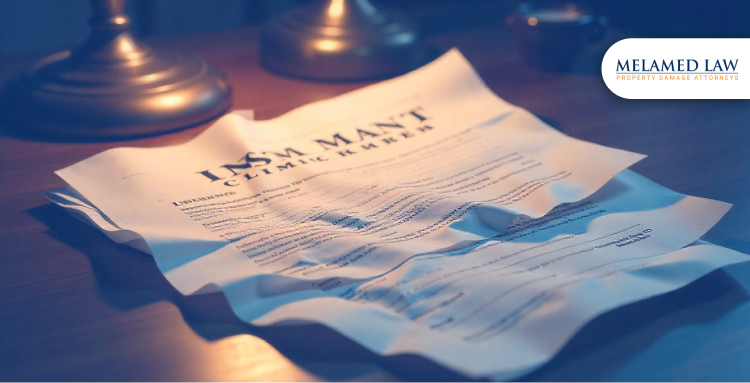
What to Do If Your Water Damage Insurance Claim is Underpaid
Water has a way of reminding us of its power. It can nurture life, carve through mountains, or—at its most unexpected—sneak into our homes and disrupt everything we’ve built. When you’ve faced the chaos of water damage, you expect your insurance to bring some sense of relief, a lifeline to rebuild and recover. But what happens when the lifeline isn’t enough?
Imagine standing in your living room, surrounded by damp walls and ruined belongings, only to find that the help you counted on has fallen short. It’s a frustrating, lonely place to be. However, you don’t have to accept an underpaid claim as the end of the story. Just as water carves its way through stone, persistence can carve a path to fairness.
Let us walk you through the steps to take when your water damage insurance claim is underpaid, so you can reclaim what you’re owed.
1) Review Your Water Damage Insurance Policy
Before taking any action, it’s crucial to thoroughly review your insurance policy. This document details the terms of your coverage, including what’s covered and what’s excluded. Here are the key sections to focus on:
Coverage Limits
It’s important to know the maximum amount your policy will pay for water damage. Most policies have specific limits based on the type of damage, so check to see if your claim falls within these limits.
Exclusions
Understand what is not covered. Some policies exclude damage caused by certain types of water events, such as flooding or sewage backup. Knowing these exclusions can help you decide whether you need additional coverage, such as flood insurance.
Policyholder Responsibilities
Make sure you’ve met all the requirements of your policy. For example, many policies require timely reporting of damage or immediate actions to mitigate further losses.
Deadlines
Note any time limits for filing claims or disputing settlement amounts. Insurance policies often have strict timelines, and missing a deadline could jeopardize your chances of receiving your desired compensation.
Misunderstanding these critical aspects can cost you significantly down the road, especially if your insurance company tries to underpay or deny your claim. You can visit the U.S. Department of Housing and Urban Development and get helpful information on understanding homeowner insurance policies
2) Document Water Damage Thoroughly
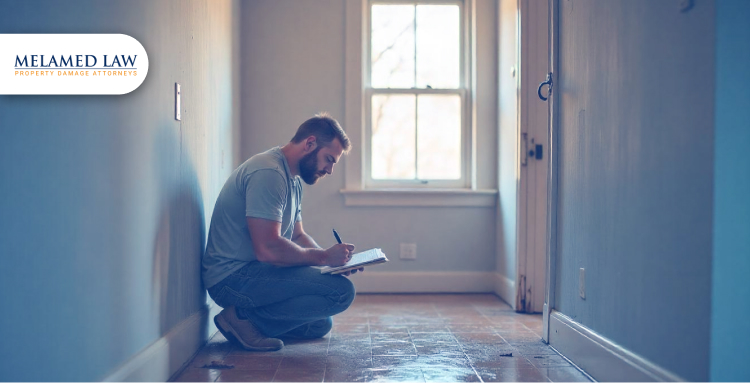
Proper documentation is one of the most important steps in ensuring your claim is handled accurately. Here's how you can build strong documentation:
Photographs and Videos
Capture time-stamped photos and videos of every area affected by water damage. These should range from minor water stains to severe structural damage. Make sure you capture close-ups and wide-angle shots to show the full extent of the damage.
Receipts for Temporary Repairs
If you’ve made any emergency repairs, such as water extraction or protecting your property, save the receipts. These expenses can demonstrate your efforts to minimize further damage, which is something the insurance company may require as part of the claims process.
Professional Assessments
Get estimates from contractors or water damage experts for the cost of repairs. Their opinions often provide a more accurate and unbiased view of the actual repair costs compared to an insurance company's initial assessment.
This documentation acts as proof in case you need to dispute any underpayment later on. If needed, you can visit external resources like the Federal Emergency Management Agency (FEMA) for guidelines on how to document water damage.
3) Prevent Further Water Damage to Your Property
Under Florida law and in most insurance policies, you are obligated to take reasonable steps to prevent further damage after water intrusion. This is essential in maintaining the validity of your claim and avoiding additional costs that the insurance company may not cover.
Here’s how to effectively mitigate further damage:
Act Quickly
The longer water remains in contact with your property, the greater the potential for mold growth or structural issues. Dry out affected areas, cover leaks, and remove standing water as soon as possible.
Keep Detailed Records
Document all actions taken to prevent further damage. This includes purchasing supplies like tarps and fans or hiring professionals for water extraction. Be sure to keep receipts and logs, as they serve as evidence of your compliance with policyholder responsibilities.
Taking immediate action can improve your chances of receiving the full payout. Visit the U.S. Department of Energy for helpful information on preventing further damage to homes affected by water.
4) How Melamed Law Protects Your Water Damage Claim

We know how disheartening it can be when your water damage insurance claim is underpaid or denied. It’s a reality that many face, yet few truly understand the weight of. The sense of injustice, the frustration of fighting against a system that should be there to support you—it’s something no one should have to endure alone. And Here’s how we can help:
In-Depth Policy Expertise
Insurance policies are often written in a language meant to confuse. It’s not by accident. We’re here to cut through that fog. With our understanding of Florida insurance law, we’ll ensure you know exactly what’s covered and, more importantly, what the insurance company is obligated to pay. We’ll spot any unfair clauses that could limit your claim and guide you toward what’s rightfully yours.
Comprehensive Claim Support
We take the time to comb through every piece of evidence, every document, and every response from your insurance company. If we find any gaps, if they’ve undervalued your claim or missed critical details, we’ll fight for you.
Negotiation and Litigation
In the face of indifference, we choose to act. Whether through negotiation or legal action, we’ll ensure your claim is fairly handled. Our focus is on your future, on the next steps, so you can rebuild while we navigate the complexities of the system.
Contact Melamed Law to ensure your story is heard and your rights are protected. It’s not a matter of luck—it’s a matter of justice.
Find additional information in these related posts
5) File a Complaint Against Your Insurance Company
In Florida, the Florida Department of Financial Services (DFS) oversees insurance companies and can investigate claims of bad faith or improper handling of claims. Filing a complaint can put pressure on your insurance company to reassess their decision.
Be Specific
Provide a clear and detailed explanation of your underpayment issue, including the claim amount, the insurance company’s response, and any supporting documents.
Highlight Relevant Facts
Show any efforts you’ve made to resolve the issue directly with the insurance company. This could include emails, letters, or records of phone calls. By demonstrating your willingness to work with the insurance company, you strengthen your complaint. While filing a complaint won’t automatically resolve your claim, it creates an official record of your grievance and can push the insurance company to reassess its actions. If necessary, it also lays the groundwork for further legal action.
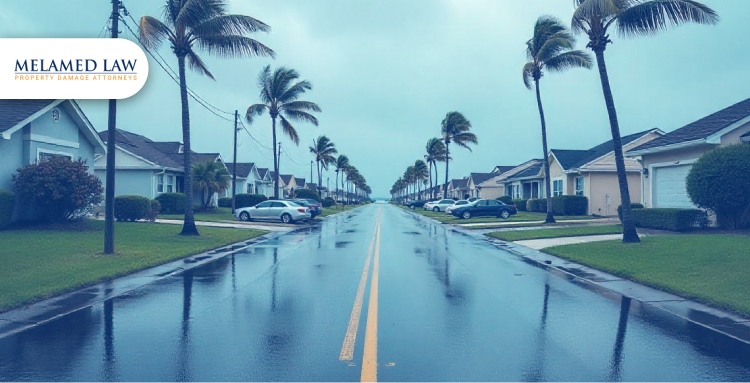
What Should I Do to Prepare for a Hurricane (Both for Household and Evacuation)?
Stretching from June 1st to November 30th, the season peaks between August and October, a time when the warm waters of the Atlantic and the Gulf of Mexico become a breeding ground for powerful storms. History has shown us the devastating impact hurricanes like Andrew, Irma, and Michael have left in their wake, reminding us of the importance of proactive preparation.
Hurricanes don’t just bring fierce winds; they also cause storm surges, flooding, and extended power outages that can disrupt daily life for weeks. Understanding past hurricane patterns and being aware of peak activity months can give Floridians a crucial edge in preparing for the unexpected.
1) How to Assess Your Home's Vulnerability to Hurricanes
Before preparing your home for a hurricane, you must first assess its vulnerability. A home that is structurally sound and equipped with the right protective measures is better able to withstand a storm’s impact. Consider the following factors when evaluating your home’s resilience:
Roof Integrity
Your roof is one of the most vulnerable parts of your home. Check for loose shingles, cracks, or leaks, as these can become major issues during a hurricane. A properly maintained roof ensures that strong winds won’t tear it off.
Window Strength
Windows are susceptible to breaking under high winds. Assess the strength of your windows and consider upgrading to impact-resistant ones or installing storm shutters.
Structural Resilience
Inspect the foundation, walls, and structural components of your home. A strong, reinforced structure can prevent severe damage.
2) How to Strengthen Your Home Against Hurricanes: Essential Tips
Once you've identified potential vulnerabilities, there are steps you can take to strengthen your home:
Installing Impact-Resistant Windows and Doors
Impact-resistant windows and doors are designed to withstand high winds and debris. Installing these is one of the most effective ways to protect your home from hurricane damage. While the initial cost can be high, the long-term benefits in terms of safety and reduced repair costs make it a worthwhile investment.
Reinforcing Roofs and Securing Loose Items for Hurricane Safety
A sturdy roof can withstand much of a storm’s force. Reinforce your roof trusses and ensure that shingles are secure. Inside your home, take the time to secure or store away any loose outdoor items like patio furniture, tools, or lawn equipment, which can become dangerous projectiles in high winds.
Using Storm Shutters and Protective Coverings Effectively
Storm shutters are essential for protecting windows and doors. If you don’t have impact-resistant glass, installing shutters can significantly reduce the risk of breakage. For added protection, consider boarding up windows with plywood.
3) Creating a Comprehensive Hurricane Emergency Kit: What You Need
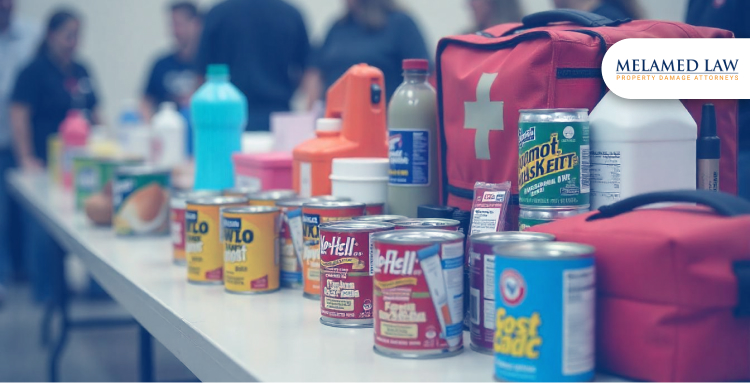
One of the most critical aspects of hurricane preparedness is having a well-stocked emergency kit. This kit should contain everything you need to survive for at least 72 hours after the storm has passed.
Essential Supplies for Hurricane Preparedness
Your emergency kit should include:
Non-perishable food and water (enough for at least 3 days)
Battery-powered flashlights and extra batteries
First aid supplies
Personal hygiene items
A portable phone charger
Extra clothing and blankets
A multi-tool or basic tools
Prescription medications and glasses
Special Considerations for Pets, Babies, and Important Documents
Make sure to include pet supplies, such as food, water, and medications, as well as baby essentials like diapers and formula. For important documents, make copies of IDs, insurance policies, and medical records, keeping them in waterproof and fireproof containers.
Best Storage Solutions for Your Emergency Kit
Consider investing in clear, durable plastic bins with airtight seals for easy organization and access. Label each container clearly to help quickly identify its contents.
4) How to Develop a Family Emergency Plan for Hurricane Evacuation
Preparing your home is important, but it’s equally vital to have a solid evacuation plan for your family. This plan will help ensure that everyone knows what to do in case you need to leave your home.
Communication Protocols and Meeting Points During a Hurricane
Decide on a communication method if phone lines are down. Identify a safe location, such as a neighbor’s house or a public shelter, as a meeting point. Make sure all family members know how to reach each other.
Designating Evacuation Routes and Responsibilities for Family Members
Familiarize yourself with nearby evacuation routes and have multiple options in case one becomes blocked. Assign clear responsibilities to each family member, such as who will pack the emergency kit, who will check on neighbors, and who will drive the vehicle.
Understanding Florida’s Evacuation Zones and Legal Implications
Evacuation orders are issued based on zones that cover the most vulnerable areas. It’s essential to understand which zone you are in and the legal implications if you fail to comply.
5) How to Determine Your Evacuation Zone in Florida
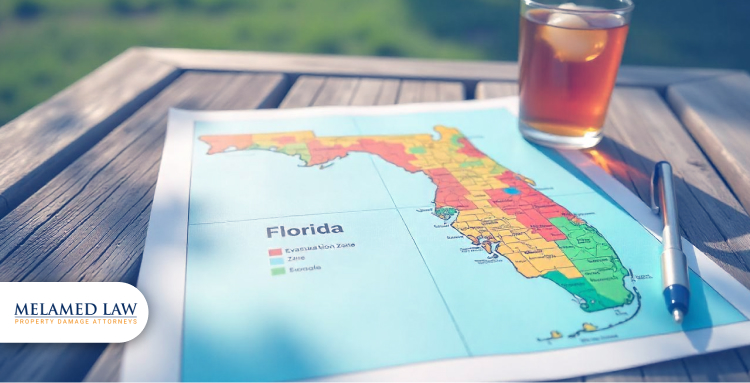
You can find your evacuation zone by visiting local government websites or using tools like the Florida Division of Emergency Management’s evacuation zone finder. Knowing your zone will help you respond quickly when evacuation orders are issued. To learn more about evacuation zones and real-time updates, visit the Florida Division of Emergency Management.
Legal Implications of Evacuation Orders in Florida
Evacuating when instructed is not only crucial for safety but may also have legal implications. Failing to evacuate could potentially result in legal consequences, especially if emergency responders need to divert resources to rescue those who ignored orders.
Resources for Real-Time Updates and Alerts
Stay informed with real-time updates from sources like the National Hurricane Center, local news stations, and emergency management agencies. Additionally, consider downloading weather apps such as the American Red Cross Emergency App for instant notifications and guidance.
6) Preparing Your Vehicle for Hurricane Evacuation: A Complete Guide
A full gas tank ensures that you have enough fuel to evacuate if needed. Gas stations may be closed or overwhelmed during a hurricane, making it difficult to refuel. Keep your tank at least half full to avoid this issue.
Packing an Emergency Car Kit with Essential Tools and Documents
Your vehicle should have an emergency kit containing:
Water, snacks, and a flashlight
A first-aid kit
A tire repair kit and jumper cables
A portable phone charger
Copies of important documents
Planning Alternative Routes for Hurricane Evacuation
Primary evacuation routes can become blocked with traffic or debris. Identify at least two alternative routes by considering road conditions, traffic patterns, and the overall distance.
7) How to Secure Important Documents Before a Hurricane Hits
Important documents are often irreplaceable, so it’s crucial to keep them safe and accessible during a hurricane.
Creating Digital Backups of Critical Documents for Hurricane Season
Scan and store copies of your critical documents, such as insurance papers, IDs, and legal documents, in digital form. Cloud storage services or external drives are reliable options.
Storing Important Documents in Waterproof and Fireproof Containers
Store physical copies of critical documents in waterproof and fireproof containers. These containers can withstand flooding and the heat from a fire, providing peace of mind during the chaos of a storm.
8) How to Protect Your Pets and Livestock During a Hurricane
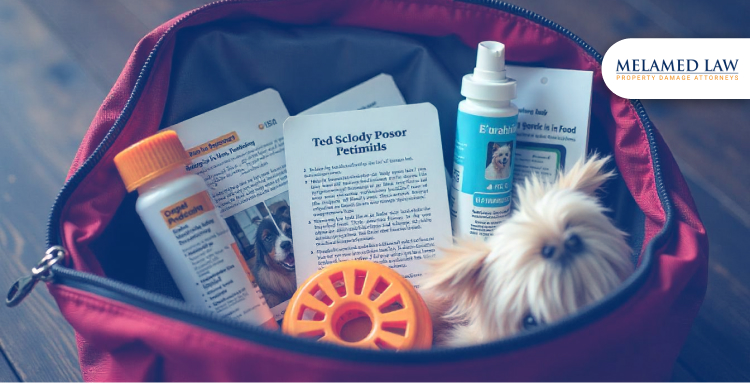
Your pets and livestock also need to be included in your hurricane preparedness plan.
Assembling Pet Emergency Kits and Identifying Pet-Friendly Shelters
Ensure your pet's emergency kit includes food, water, medications, leashes, and vaccination records. Research pet-friendly shelters in your area or make arrangements for where to take your pets if you need to evacuate.
Planning for Livestock Evacuation or Shelter During a Hurricane
For livestock, plan ahead by identifying evacuation routes to animal shelters or safe locations. Work with local agricultural agencies for advice on managing livestock during a storm.
9) Financial Preparedness for Hurricane Season: Insurance and Budgeting Tips
Insurance is a crucial aspect of hurricane preparedness, but it’s also essential to have the right financial plan in place.
Reviewing and Updating Your Insurance Policies for Hurricane Protection
Ensure that your homeowners and flood insurance policies cover hurricane damage. Make sure your coverage includes replacement costs and is adequate for rebuilding after a major storm.
Documenting Your Home Inventory for Insurance Claims After a Hurricane
Keep a detailed inventory of your home’s belongings, including photographs and receipts, to streamline insurance claims if damage occurs. This documentation can speed up the claims process.
Setting Aside Emergency Funds for Unexpected Hurricane Expenses
Set aside emergency funds to cover out-of-pocket expenses, such as temporary lodging or emergency repairs. Financial preparedness will reduce stress when unexpected costs arise.
10) Community Support During a Hurricane: How to Help Neighbors and Stay Safe
Hurricane season isn’t just about personal preparedness; it’s also about helping your community.
Establishing a Neighborhood Watch and Assistance Network
Set up a neighborhood watch to share information and resources. A network of neighbors can provide assistance with evacuations, check on vulnerable residents, and offer help during the recovery phase.
Sharing Resources and Information with Neighbors During a Hurricane
During the storm, maintain communication with neighbors, sharing vital resources like food, water, and medical supplies. By pooling resources, you can help everyone stay safe.
Volunteering for Local Emergency Response Teams
Get involved with local volunteer organizations or emergency response teams. Your efforts can make a significant impact on the recovery process in your community.
Want additional information? Explore our related articles:
How does hurricane insurance coverage differ from standard homeowners' insurance policies?
What is the plan for rebuilding Tropicana Field after the damage caused by Hurricane Milton?
How Melamed Law PLLC Can Help with Hurricane Preparedness and Recovery
The impact of a hurricane can leave you facing unexpected hurdles, but having reliable legal support can ease the burden. We’re ready to stand by your side and help you protect what matters most. We assist with insurance claims to ensure you receive fair compensation for property damage and losses, and we provide skilled representation for disputes with insurance companies or other legal issues related to hurricane recovery.
Our team is committed to offering comprehensive support to help you prepare, protect, and rebuild. If you need legal guidance before or after a hurricane, we’re just a call away—contact us today.

What are some common mistakes to avoid when filing a property damage claim?
Isn’t it strange how, in the face of disaster, we’re expected to become experts in things we’ve never given much thought to before? One day, your home is your sanctuary, a place of comfort and safety. Next, it’s the subject of endless paperwork, photographs, and negotiations with insurance companies that seem to speak a language all their own. There’s a quiet absurdity to it—a collision of chaos and bureaucracy, where the stakes are heartbreakingly personal.
Let's explore the critical mistakes that many property owners unknowingly make when filing their claims, so you can protect your interests and ensure you receive the compensation you deserve for your property damage.
1) Common Mistakes to Avoid
Filing a property damage claim might seem straightforward, but several pitfalls can complicate the process.
➤ Delaying the Claim
Failure to meet these deadlines can result in your claim being denied outright or receiving significantly reduced compensation. Time is of the essence, and the longer you wait, the harder it may be to prove the extent of the damage, especially in the aftermath of widespread events like hurricanes or tropical storms.
To avoid this pitfall, it’s essential to report the damage to your insurance company as soon as possible. This prompt action complies with your policy's requirements and positions you to receive timely assistance and compensation.
Even if you are unsure of the full extent of the damage, initiate the claim process immediately and provide additional details as they become available. Keep records of all communications with your insurance company, and make sure to document the damage thoroughly with photographs and videos from the moment you notice it.
➤ Inadequate Documentation

Inadequate documentation is a common mistake that can seriously undermine your property damage claim. Without sufficient evidence, your insurance company might dispute the extent of the damage or, worse, deny the claim altogether. In Florida, where natural disasters like hurricanes frequently cause widespread damage, the burden of proof often falls on the policyholder to demonstrate the nature and scope of their losses.
To ensure your claim is supported by solid evidence, follow these steps:
Take clear photos and videos of all damages from multiple angles, including close-ups and wide shots for context.
Keep detailed records of all communication with contractors, including repair estimates and any receipts for temporary fixes.
Document the timeline of events, noting when the damage occurred and when each step in the claim process was taken.
➤ Making Unauthorized Repairs
Attempting to repair the damage before the insurance adjuster has assessed it can interfere with the insurer’s ability to accurately evaluate the damage. In Florida, insurers need to assess the full extent of the damage to determine appropriate compensation. Unauthorized repairs may lead to disputes or denials of claims.
To protect your claim, delay permanent repairs until after the adjuster's inspection. Document any temporary repairs thoroughly with photos and keep receipts for any materials purchased. This approach helps minimize additional damage while preserving the integrity of your claim and helps you in resolving property disputes quickly.
➤ Accepting the First Settlement Offer
Insurance companies often aim to settle claims quickly, which may result in an initial offer that is far lower than what you are entitled to. Accepting the first offer without a thorough review can lead to inadequate compensation, leaving you with unexpected out-of-pocket expenses or insufficient coverage for repairs.
Always review settlement offers carefully before accepting. Take time to compare the offer with your estimates for repair costs, replacement of personal property, and any temporary living expenses if necessary. Consider seeking professional advice from an attorney or public adjuster who can assess the fairness of the offer. It’s important to ensure that you’re not leaving money on the table.
Legal Recourse:
If you believe the offer is insufficient, you have legal options. Mediation and arbitration are common methods of resolving disputes without going to court, and they can often lead to better outcomes for policyholders.
If necessary, you may also consider litigation. Florida’s "bad faith" insurance laws allow for policyholders to sue their insurer for unfair settlement practices, providing a strong incentive for insurance companies to offer reasonable compensation.
➤ Providing Incomplete or Inaccurate Information

Insurance companies rely on the information you provide to assess the damage and determine the appropriate compensation. According to the National Association of Insurance Commissioners (NAIC), up to 20% of claim delays and denials are caused by discrepancies or incomplete details in the claim. This can range from failing to fully document the damage to misreporting the timeline or nature of the incident. Any inconsistency can raise red flags for the insurer and may even lead to a claim denial.
Provide precise and consistent details about the damage and clarify any uncertainties. Double-check your documentation, including photos, receipts, and estimates, to support your claim and avoid delays or disputes.
➤ Ignoring Policy Details
Ignoring or not fully understanding the details of your insurance policy can lead to costly mistakes when filing a property damage claim. Many policyholders are unaware of key exclusions or limits in their coverage, which can result in unexpected out-of-pocket expenses. For instance, in Florida, standard homeowner’s insurance often excludes certain types of damage, such as flooding, unless specifically added with a separate policy.
According to the Insurance Information Institute (III), a significant number of claims are denied or reduced because policyholders fail to understand the specifics of their coverage, such as limits on personal property or exclusions for certain natural disasters.
Therefore, review your insurance policy thoroughly, focusing on coverage, exclusions, and limits. Understand what is covered and consult your agent or a legal professional if needed. Regularly update your policy, especially after major changes, to ensure adequate coverage
2) Legal Considerations

Early recognition of bad faith practices, understanding how insurance law works, and proper documentation are essential for protecting your rights.
Florida's Insurance Laws
Policyholders in Florida are protected by comprehensive insurance regulations, primarily through the Florida Unfair Insurance Trade Practices Act (UITPA). This act establishes strict guidelines for insurance companies' conduct and prohibits deceptive practices. As a policyholder, you're entitled to prompt communication, fair claim handling, and written explanations for claim decisions. If you believe your insurer is acting in bad faith, you must file a Civil Remedy Notice (CRN), after which the insurance company has 60 days to resolve the issue before you can pursue legal action.
Bad Faith Insurance Practices
Insurance companies must operate in good faith and handle claims fairly. Florida follows a two-step process for bad faith claims: first establishing the insurance company’s liability and damages, then pursuing the bad faith claim itself. Examples of bad faith practices include unjustified claim denials, inadequate investigations, unreasonable delays in processing claims, or deliberately undervaluing damages. If proven, bad faith claims can result in additional compensation beyond the original claim amount, including consequential damages and attorney's fees.
How Melamed Law Helps You in Complicated Claims or Disputes
When dealing with complex property damage claims—such as extensive damages, multiple parties, or unclear causes—consulting an attorney early is crucial. Melamed Law, PLLC ensures that you act within critical deadlines, especially if your insurer denies your claim or offers insufficient settlements. Our team can help identify bad faith practices and guide you through mediation, arbitration, or litigation when needed.
Our legal team guides you through filing your claim and pursuing all available legal remedies, ensuring you don't miss out on the compensation you deserve. Contact us today for a free consultation to secure the compensation you deserve.

When to Seek Legal Help for Wind Damage Insurance Claims
Dealing with insurance after wind damage is not just a matter of paperwork; it’s a test of resilience, of trust, and sometimes, of patience. You expected the storm to challenge you, but not the process that follows. And yet, here you are, wondering if this fight for what is rightfully yours is worth the energy it demands. It is in this moment, when the answers grow murky and frustration rises, that the thought occurs: perhaps it’s time to call for help.
Let’s talk about when and why you might need someone on your side—someone who speaks the language of insurance and fairness better than most.
1) If Your Wind Damage Claim Is Denied or Underpaid
Insurance companies often deny or undervalue wind damage claims, leaving property owners with unexpected financial burdens. Denials are frequently based on alleged pre-existing damage, disputes over whether the policy covers specific wind-related incidents or technicalities buried in policy exclusions. Similarly, lowball settlements occur when insurance companies underestimate repair costs or omit critical damage assessments.
Florida's regulatory framework continues to hold insurance companies accountable for acting in bad faith, but enforcement can be complex without expert intervention. A property damage attorney can dissect your policy, pinpoint inconsistencies in the insurance company’s reasoning, and build a compelling case to secure the full compensation you deserve.
2) The Insurance Company Is Delaying Your Claim
Florida law mandates that insurance companies act promptly when processing claims. However, many policyholders face slow responses, repeated requests for unnecessary paperwork, or vague explanations for the holdup.
If your insurance company is dragging its feet or failing to meet these deadlines, it’s not just inconvenient—it may be illegal. An experienced property damage attorney can apply pressure on the insurance company to comply with Florida’s strict timelines. They can also escalate the matter to avoid prolonged delays, ensuring you aren’t left waiting while the damage continues to worsen.
3) Your Insurance Company Accuses You of Misrepresentation

Insurance companies may claim that you misrepresented facts during the claims process, whether it’s about the extent of the damage, the cause of loss, or details regarding your policy. Even unintentional mistakes can lead to serious consequences, including denied claims or, in some cases, policy cancellations.
These accusations can severely impact your ability to recover the compensation you're entitled to. A property damage attorney can secure your interests by thoroughly reviewing the evidence, defending against baseless allegations, and ensuring that your version of events is properly presented. Misrepresentation claims require careful handling, and having legal representation ensures that your rights are protected.
4) The Damage Assessment Seems Inaccurate
After a wind event, your insurance company will typically send an adjuster to assess the damage to your property. However, these assessments are not always thorough or accurate. In many cases, adjusters may miss hidden damage or underestimate the scope of necessary repairs, which can result in significantly lower payouts than you need to fully restore your property.
According to the Florida Department of Financial Services (DFS), insurance companies are obligated to conduct a fair and thorough evaluation, but disputes often arise over the quality and accuracy of the assessment. If you feel the adjuster’s report doesn’t accurately reflect the repairs needed, it’s crucial to get a second opinion.
➢ Independent Experts Can Provide a Fair Estimate
Third-Party Involvement: If you believe the insurance company’s damage assessment is insufficient or inaccurate, you have the right to challenge it. An experienced attorney can bring in independent experts, such as contractors or engineers, to conduct a more detailed evaluation of the damage. These experts can provide an unbiased, professional estimate of the repair costs, which can be used to negotiate a more accurate settlement.
Impact of Independent Expert: In many cases, insurance companies are more likely to take your claim seriously when an attorney is involved, especially when they see that you’ve taken the initiative to have an independent expert evaluate the damage.
5) You’re Unsure About Your Policy Coverage
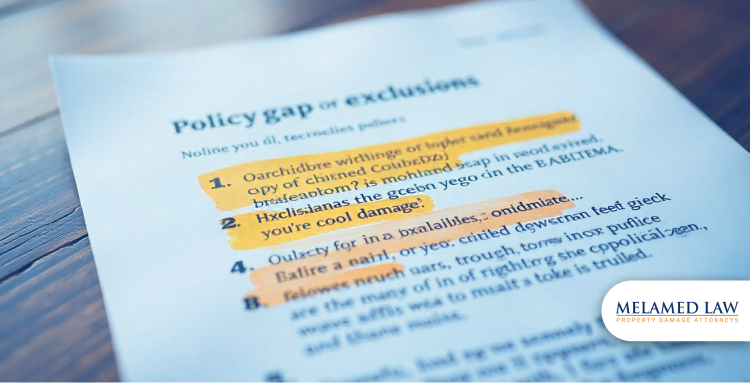
Complexity of Florida Homeowners Insurance
Florida homeowners insurance policies can be particularly difficult to navigate, especially when it comes to windstorm damage. Many policies contain specific provisions, exclusions, or endorsements that impact coverage for wind-related incidents.
For example, hurricane damage might be subject to separate deductibles or exclusions, or certain types of wind damage may only be partially covered, depending on the wording of the policy.
Identifying Coverage Gaps
Policyholders may not realize that certain types of damage—such as flooding caused by wind—are typically excluded under standard homeowners policies. If you’re unsure what’s covered and what’s not, you need legal help to identify any gaps in your policy that may impact your claim. This is crucial because even minor nuances in the policy language can have a major effect on how your claim is processed and whether you receive compensation.
Guidance on the Next Steps
To interpret the fine print of your policy, clarify confusing terms, and understand the coverage you have—or don’t have. Take the right steps to fill any gaps, whether it’s through additional claims, policy adjustments, or negotiations with your insurance company. Here, legal guidance ensures you aren’t left vulnerable to unexpected exclusions or limitations when it comes time to file your claim.
6) The Insurance Company Uses Bad Faith Tactics
Insurance companies are legally required to act in good faith, meaning they must handle claims honestly and fairly. However, some insurance companies engage in bad faith practices to minimize their payout or avoid responsibility altogether. Common signs of bad faith include:
Denying valid claims without explanation: If your claim is denied without clear reasoning or a legitimate basis, unfortunately, it may be a sign the insurance company is trying to avoid paying.
Misinterpreting policy language: Insurance companies may intentionally twist the terms of your policy to justify rejecting or undervaluing your claim.
Intimidating or pressuring you to accept a low offer: If the insurance company tries to force you into accepting a settlement that is far below the actual cost of repairs or replacements, they may be attempting to settle quickly at your expense.
7) You’re Facing a Tight Deadline
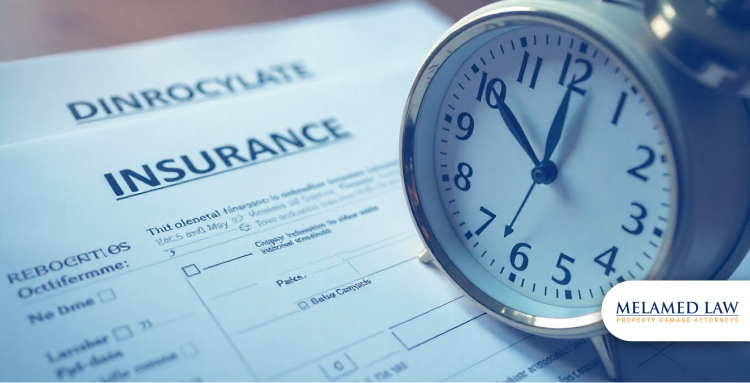
We know that dealing with property damage is already burdensome, and the added pressure of timelines can make it feel even more stressful. Here is a crucial factor you need to consider. An experienced attorney can help you navigate these time-sensitive issues.
They’ll ensure that all required notifications are submitted promptly and filling your claim within the appropriate timeframe. If you seek legal help early, you can avoid the risk of missing critical deadlines and ensure your right to seek compensation is preserved.
Melamed Law PLLC: Your Ally for Winning Wind Damage Claims
Dealing with wind damage after a storm is more than just a property issue—it’s about the stress, the uncertainty, and the emotional toll of having your home or business damaged. Melamed Law PLLC is here to make the process smoother. When claims are denied, delayed, or underpaid, our skilled attorneys step in to address disputes and protect your rights. We also collaborate with independent experts to challenge lowball assessments, ensuring the full extent of your damage is accounted for.
If you’re unsure about your coverage or suspect bad-faith tactics, our team is ready to guide you. Reach out to us for a free consultation, without worrying about money. You only pay us when we give you a win. With our comprehensive support, you can focus on rebuilding while we handle the legal challenges.
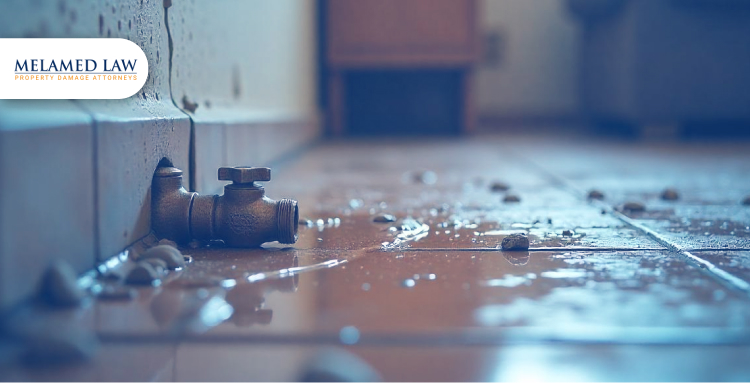
Does Homeowners Insurance Cover Plumbing Leaks in Florida?
Let’s talk about something as ordinary as water, something we take for granted until it betrays us. A quiet drip in the shadows, a pipe under strain—small things that can, without warning, unravel the foundation of your home and peace of mind. In Florida, where unpredictability is woven into the fabric of life, the question isn’t just whether plumbing leaks will happen, but whether you’re prepared when they do.
And as with most things, the answer lies not in the leak itself, but in the fine print of your homeowners insurance policy. Let’s explore that gray area, where what’s covered and what isn’t can make all the difference.
What Types of Plumbing Leaks Are Covered?
Understanding what plumbing leaks are covered under your homeowners insurance can save you stress and unexpected costs. Here's a closer look at the types of leaks your policy may handle:
1. Sudden and Accidental Leaks:
Let's talk about what plumbing leaks your homeowner's insurance typically covers. Generally, policies cover "sudden and accidental" water damage. This means the damage must be unexpected and not due to neglect.
If a pipe bursts out of nowhere or a plumbing fixture unexpectedly fails, your homeowners insurance likely covers the damage. For instance, if a washing machine hose snaps and floods your home, your policy can help cover the repair costs. The key factor is that the damage must be sudden and accidental.
Sometimes, leaks happen because of external factors. For example, a tree branch or heavy roof debris could break a pipe. Similarly, severe storms or fires can damage plumbing systems. In these cases, insurance typically covers repairs, including any water damage. This also applies to pipes that freeze and burst during a cold spell—provided you kept the heat on and made efforts to protect your pipes from freezing.
Household appliances like dishwashers, water heaters, and washing machines can also cause sudden leaks. If an appliance unexpectedly malfunctions and floods your home, your insurance policy should help pay for repairs.
If a sudden roof leak causes plumbing damage that might also be covered. For example, if a storm creates a hole in your roof, leading to a plumbing issue, your insurance may assist with repairs.
2. Resulting Damage:
In Florida, homeowners insurance policies typically cover the resulting damage from plumbing issues, even if the plumbing system itself isn't covered. This means that if a pipe bursts and causes water damage to your floors, walls, or ceilings, the damage to these areas is generally included in the coverage.
Taking immediate action when a leak occurs is critical. Delaying repairs can weaken your claim. Your Insurance company assesses how and why the damage happened, so ensuring the event was unexpected and unavoidable is crucial for coverage. Additionally, take a few pictures and save all receipts if you need to make any urgent repairs before the adjuster comes.
When Are Plumbing Leaks Not Covered?
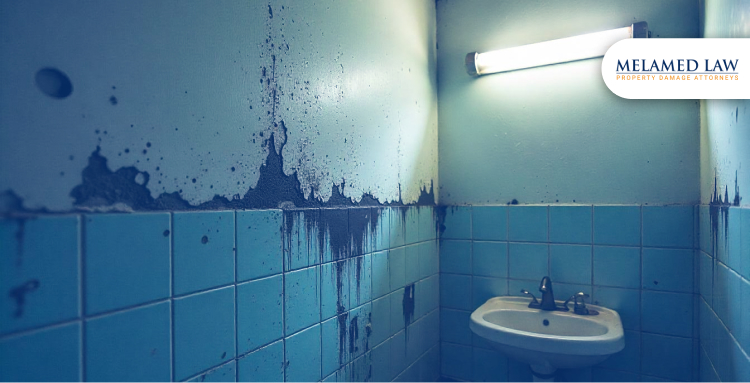
Not all plumbing leaks are covered by homeowners insurance. Insurance policies usually exclude damage that occurs gradually, results from neglect, or stems from external causes like flooding.
1. Gradual Damage:
Insurance doesn’t cover damage caused by slow leaks or long-term issues. These are considered maintenance problems that fall under your responsibility as a homeowner.
For instance, if a pipe under your sink has been dripping for months and causes mold or structural damage, your policy won’t help. Similarly, if moisture or wetness from neglected plumbing leads to rot or mildew, you’ll need to cover those expenses out of pocket. Insurers expect homeowners to address leaks promptly. Ignoring them can leave you responsible for costly repairs.
2. Negligence:
If damage happens because of poor upkeep, your insurer may deny the claim. Examples include failing to repair rusting pipes or ignoring small cracks.
Letting your pipes freeze during winter by leaving your home unheated is another common exclusion. To maintain coverage, you must take steps to prevent freezing, such as insulating pipes and keeping the heat on. Insurers view these precautions as your responsibility. Over time, wear and tear on plumbing systems is inevitable. Insurance won’t pay for repairs due to aging pipes, clogs, or corrosion. Routine inspections and timely fixes can save you from facing hefty repair bills alone.
Some policies may have specific exclusions. For example, leaks from swimming pools are often not covered as they are deemed preventable.
3. Flood Damage:
Standard homeowner's insurance does not cover damage caused by external flooding. This means flooding damage from natural events like heavy rain or overflowing rivers. You need separate flood insurance for this.
4. Additional Coverage Options:
Water Backup & Sump Pump Failure Coverage: This coverage protects against damage caused by sewer or drain backups. Standard policies usually exclude this, so it's a valuable addition.
Home insurance policies don’t often cover sump pump failures unless you acquire an additional rider or endorsement. If this coverage isn't currently included in your insurance, think about getting it. Because fixing these backups can be quite costly.
Flood Insurance: This insurance is essential for homes in flood-prone areas, as it covers water damage from natural disasters. Standard homeowners insurance policy won’t cover this type of damage. You’ll require separate flood insurance coverage.
Flood insurance typically comes in two parts:
Dwelling Coverage: Covers repairs to your home’s structure, including plumbing and electrical systems damaged by floodwaters.
Contents Coverage: Protects personal belongings like furniture, clothing, and appliances.
Flood insurance policies offered by the National Flood Insurance Program (NFIP) cap coverage for dwellings at $250,000 and personal belongings at $100,000. Private insurers may offer higher limits if needed. However, unlike standard homeowners insurance, flood insurance doesn’t include living expenses.
What to Do if You Have a Leak

Dealing with a plumbing leak can be stressful. But if you act quickly and methodically, you can minimize damage and ensure a smoother insurance claim process. Here’s what you need to do:
1. Act Quickly:
The first thing to do is stop the water flow to prevent further damage. Locate the main water shutoff valve in your home and turn it off immediately. If the leak is coming from an appliance, such as a washing machine or dishwasher, you can often stop the water supply to that specific device. (Also read: What is the best way to dry out your house if there is water damage?)
After stopping the water, assess the situation. If the leak is severe, call a plumber to fix the issue. Quick action can prevent minor leaks from escalating into major problems. Also, it can save you from more extensive repairs and insurance headaches.
2. Document the Damage:
Once the leak is under control, document everything. Take clear photos and videos of:
The source of the leak (e.g., a burst pipe or faulty appliance).
All affected areas, such as floors, walls, ceilings, and furniture.
Any visible signs of water damage, including stains, warping, or mold growth.
While your instinct might be to clean up right away, try to document the damage before you start cleaning. This provides a clear picture of the initial damage for your insurer. However, if standing water risks further damage or mold growth, take steps to remove it. But make sure to document the area before and after.
If possible, keep damaged items for the insurance adjuster to inspect. If you have to dispose of anything, take photos and videos of it first. This evidence will help substantiate your insurance claim. Be thorough—missing details could delay or weaken your claim.
More for you: What are the most common reasons for insurance claim rejections?
3. Contact Your Insurer:
Once you've documented the damage, contact your insurance provider as soon as possible. Explain the situation clearly and provide all the evidence you’ve gathered. Be prepared to answer questions about:
When and how the leak occurred.
The steps you took to address the issue.
The extent of the damage.
Your insurer will guide you on the next steps, which may include scheduling an inspection or providing a list of approved contractors. Be honest and detailed in your communication—insurers often scrutinize claims to ensure they align with policy terms.
Consult with Melamed Law PLLC
A plumbing leak isn't just a minor setback—it's a disruption that throws your whole life off balance. Water begins to invade, ruining the things you've worked so hard to maintain, and before you know it, you're drowning with repairs and uncertainties. And as you try to figure it out, your homeowner's insurance might not have the solution you're hoping for.
At Melamed Law, we understand. We get the weight of it, that sense of helplessness when things go wrong. But this is your story, not just a case. Let us help you make sense of it. We’ll sift through the fine print of your insurance policy, track down the source of the damage, and make sure you're not left fighting an unfair battle alone. We’ll gather the proof, challenge any denials, and stay by your side, fighting for what’s rightfully yours.
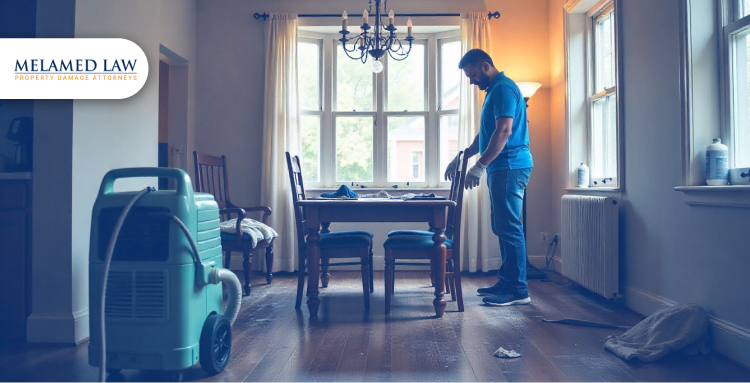
What is the best way to dry out your house if there is water damage?
When rain pours down in Florida, it can do more than just drench the ground—it can flood your home. Damp carpets, soggy walls, and the constant drip of water—it’s a homeowner’s worst nightmare. Whether it’s caused by a burst pipe, a powerful storm, or a sneaky roof leak, water damage can leave you feeling staggered.
But the good news is with the right steps, you can tackle the problem head-on and save your home from further damage. Acting quickly is key to avoiding mold, structural issues, and costly repairs. Let's explore the most efficient methods for quickly drying out your home and restoring its normalcy, allowing you to feel a sense of relief.
I) Safety Precautions Before Starting
When water damage strikes, the last thing you want is to make the situation worse by overlooking safety. Taking a few important precautions before you dive into cleanup can help you avoid serious hazards down the road.
A. Turn Off Electricity
The first thing you want to do when facing water damage is make sure your home is safe. If you see standing water and aren’t sure if it’s come into contact with electrical outlets or wiring, turn off the power immediately. This is a critical step in staying safe during a hurricane and should be a top priority.
Water and electricity don’t mix, and you don’t want to risk a dangerous shock while working to clean up. If the water has already reached your electrical system, it’s best to leave the area and call a professional to safely shut off the power.
B. Wear Protective Gear
Water damage can expose you to harmful contaminants like bacteria, mold spores, and other dangerous materials. Wearing protective gear shields you from these risks and keeps you safe.
Rubber Gloves: Protect your hands from dirt, debris, and potential contaminants in the water.
Sturdy Boots: Help you through the water safely, preventing slips and keeping your feet dry and protected from sharp objects or debris.
Mask: Safeguard your lungs from inhaling dust, mold spores, or bacteria that might be present, reducing the risk of respiratory issues.
Protective Clothing: Consider wearing long sleeves and pants to further shield your skin from harmful substances and avoid direct contact with contaminated water.
II) Removing Standing Water
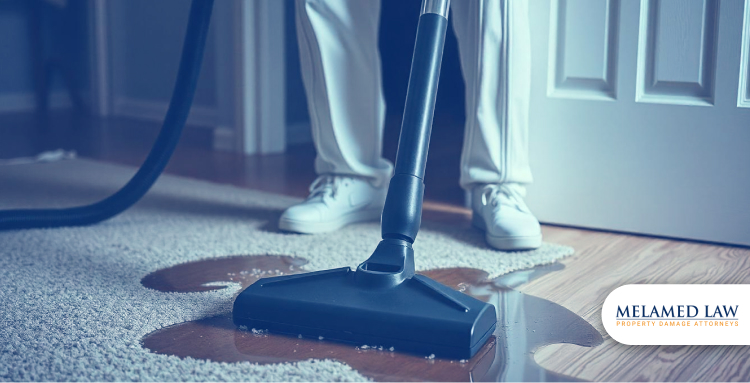
Now that you've taken the necessary safety precautions, it's time to deal with the standing water. Whether it’s a small puddle or a room flooded with several inches, acting quickly will help minimize further damage to your home.
➧ Use of a Wet/Dry Vacuum
For small amounts of standing water, a wet/dry vacuum is your best tool. These powerful machines efficiently suck up water, making them ideal for carpets, hardwood floors, and small puddles in rooms. Portable and easy to maneuver, they easily reach tight spots where water tends to collect.
Most models also handle debris, so they’ll remove both water and dirt, helping you clear up the mess. It’s a simple and effective way to begin drying the area and stop water from spreading.
➧ Pumps for Deep Water
For larger volumes of water, a pump is essential. It quickly clears flooded rooms, basements, or garages by sitting in the water and pushing it out through a hose. Renting or purchasing a submersible pump helps remove the bulk of water, allowing you to start drying sooner. Just be sure to direct the water away from your foundation to prevent further damage.
III) Improving Air Circulation
After clearing the standing water, focus on drying out your space. Air circulation is key to speeding up the drying process, especially in Florida’s hurricane season.
Open Windows and Doors: Start by opening windows and doors to let fresh air flow through your home. Natural ventilation is one of the simplest ways to help dry out a space, as it allows the moist air to escape while bringing in drier air. It’s an easy and free way to get the air moving and reduce moisture levels inside.
Utilize Fans: To really push the drying process along, fans are your go-to tool. Set up household fans in the affected areas to circulate air and speed up evaporation. Place them near windows or doors to encourage air to flow out of the room, which helps carry the moisture away.
Air Movers and Industrial Equipment: If you’re dealing with a significant amount of water damage, it might be time to consider industrial-grade equipment like air movers. These high-powered air movers work faster and more efficiently than regular fans, ensuring your home dries as quickly as possible, reducing the risk of mold or further damage
IV) Using Dehumidifiers to Combat Humidity
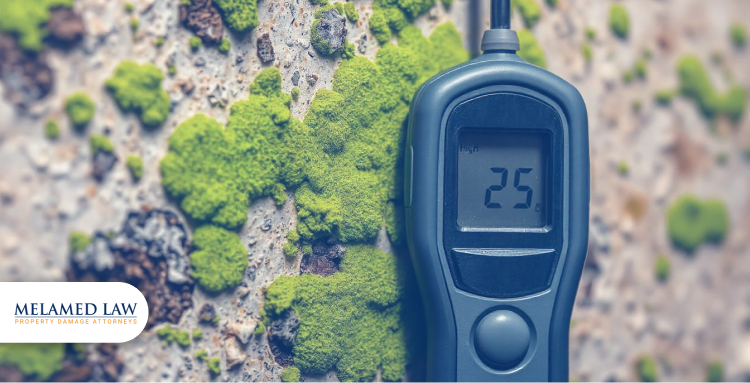
In Florida's humid climate, dehumidifiers are essential for speeding up the drying process and preventing mold growth. Mold growth can cause extensive property damage, potentially leading to the need for filing a property damage claim to protect your interests and cover costly repairs. A household dehumidifier is ideal for smaller areas, while a commercial-grade unit is better for large-scale water damage. Commercial units are more powerful and can handle bigger spaces, making them a smart choice for tackling serious moisture issues quickly.
V) Removing Water-Damaged Materials
Once you’ve removed standing water and started drying the space, it’s time to focus on the materials that can’t be saved, such as :
Carpet, Padding, and Rugs
Evaluate your carpet, padding, and rugs to determine if they can be saved. Remove any carpet soaked for more than 24 hours to prevent mold growth. Discard wet padding, as it’s hard to dry and can trap moisture. Check the carpet for staining or musty odors—these are signs of mold. If the carpet is still in good condition and the water is clean, professional cleaning may be possible. Otherwise, dispose of it to avoid health risks.
Drywall and Insulation
Drywall and insulation are highly susceptible to water damage and mold. Check for sagging, warping, or soft spots in the drywall. If it’s damp, cut out and replace the affected sections. Remove and replace wet insulation, as it loses effectiveness and can harbor mold.
VI) Cleaning and Sanitizing Surfaces
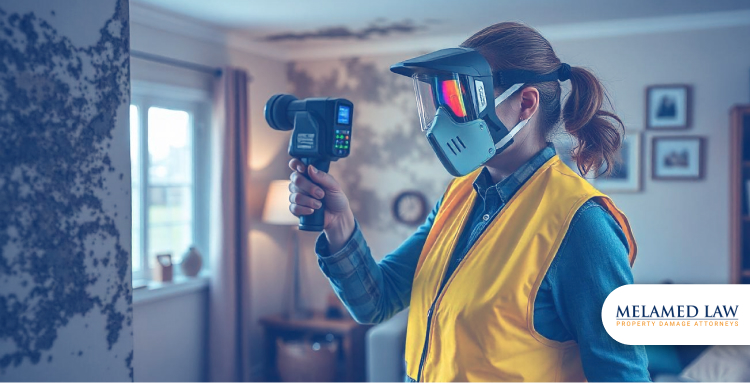
After removing water-damaged materials, the next step is to clean and sanitize the remaining surfaces to ensure your home stays safe and healthy.
➣Disinfecting to Prevent Bacteria and Mold
To effectively disinfect surfaces and prevent mold, you'll want to use a mild cleaning solution. Disinfect hard surfaces like floors, walls, and countertops with a bleach solution by mixing 1 cup of bleach with 1 gallon of water. For more delicate surfaces like wood, choose a gentler cleaner. Make sure to scrub thoroughly, especially in corners or cracks where water may have pooled. After cleaning, allow surfaces to air dry to avoid trapping moisture
➣Specific Cleaning Tips for Different Materials
Wood: Clean wood surfaces gently to prevent damage by using a damp cloth with mild soap and water, then dry them immediately. Replace the wood if it feels soft or swollen.
Tiles: Clean tile and grout with a bleach solution or a commercial cleaner designed for mold and mildew removal. Scrub the grout lines thoroughly to remove moisture and mold buildup.
Soft Furnishings: Clean upholstery and fabric cushions with a fabric-safe disinfectant. For heavily soiled fabric, hire a professional cleaner to eliminate mold or bacteria.
VII) Monitoring and Inspecting for Mold
Mold can begin growing within 24 to 48 hours in Florida’s humid climate, especially in areas affected by water damage. It can spread quickly, compromising the structural integrity of your home and your health. The Florida Department of Health recommends addressing mold growth immediately—regardless of the type of mold—because even non-toxic varieties can cause respiratory issues, skin rashes, and exacerbate allergies.
If you notice mold growth or suspect hidden mold, it’s essential to call in a professional mold inspector. They can use specialized equipment, like thermal cameras or moisture meters, to locate mold in hard-to-see areas. If the mold covers a large area or if it’s found in sensitive areas like HVAC systems or under insulation, a professional mold remediation specialist can ensure safe and effective removal.
How Can Melamed Law Help You with Damage Restoration?
When dealing with water damage, assess the situation to determine if you can manage it yourself or need professional support. For small areas, DIY methods like wet/dry vacuums and fans may be sufficient. However, widespread flooding, significant moisture, or hidden damage often requires expert intervention. If mold growth is visible or suspected behind walls and floors, it is another red flag that calls for professional support.
Melamed Law can help—offering professional legal services for residential and commercial property damage claims involving water and mold damage. Contact us to protect your rights and guide you toward a smooth, hassle-free recovery.
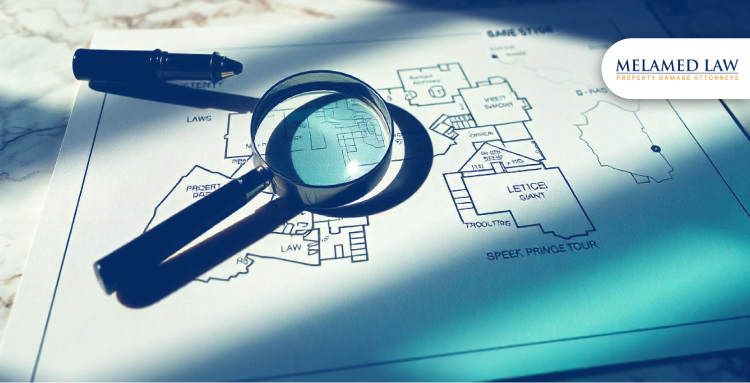
What are some things that will end property disputes easily and quickly?
Property disputes can escalate quickly, turning friendly neighbors into rivals over something as simple as a misplaced fence. A quick wave across the yard can transform into cold stares, and what started as a minor misunderstanding can snowball into a full-blown standoff. But it doesn’t have to go that far.
So, how can these disputes be resolved smoothly? The good news is there are practical steps to bring things back to harmony. A sincere conversation can often work wonders, and if needed, involving a neutral mediator can bring in an unbiased perspective. With a little patience and the right approach, these situations can be settled calmly, sparing everyone the stress and drama.
I) Common Causes of Property Disputes in Florida
Owning property is a rewarding achievement, but it can come with its challenges. Property disputes can turn a peaceful place into a source of stress. By understanding the common causes of these disputes and addressing them earlier, property owners can prevent conflicts from escalating and handle issues with confidence.
Boundary Issues
Boundary disputes often happen because of unclear property lines or misunderstandings about land use. For example, a new fence might cross over the boundary a bit, leading to confusion and possible disagreements between neighbors. Hiring a professional land surveyor and keeping communication open and respectful can go a long way in solving these issues calmly.
Title Defect
Title defects, like undisclosed liens or mistakes in transfer paperwork, can really complicate property ownership and even put your rights at risk. Luckily, a good title search can catch these problems early on, making the whole transaction process much smoother.
Easement Disagreements
Easements allow people certain rights to use someone else’s property, like using a shared road or utility line. Sometimes, misunderstandings come up if the terms aren’t clear or if one person feels their rights are being stretched. But with a close look at the legal documents and some open, respectful negotiation or mediation, most of these issues can be worked out in a way that leaves everyone happy.
Land Use and Zoning Issues
Local land use and zoning rules set guidelines for how property can be developed or changed. Issues can pop up if, for example, building plans don’t match local restrictions, or if a new business changes the feel of a neighborhood. Working through these disputes often means clearly understanding and talking with local authorities to find solutions that respect everyone’s interests and keep the community in balance.
Encroachments
Encroachments occur when one person’s property extends into another’s, such as a tree limb, shed, or driveway crossing a boundary. While these situations can sometimes lead to disagreements, they are often manageable with the assistance of property surveys and, when necessary, boundary agreements or minor adjustments. The goal is always to preserve goodwill and protect property values.
II) Effective Methods for Rapid Property Dispute Resolution

Resolving property disputes quickly takes a good approach and a willingness to work together. Here are some tried-and-true methods to help turn conflicts into solutions with as little stress and delay as possible.
➤ Clear Communication & Negotiation: Prevent Misunderstandings
Sometimes, the best way to resolve a property dispute is simply to talk things out. Open and honest communication can clear up any confusion before it gets out of hand. Often, both sides might be working with old information or different ideas about what’s going on. Just having a real conversation can often stop things from escalating and avoid the need for any formal processes.
When talking about property issues, it helps to:
Keep an open mind and be ready to listen to the other person.
Try to understand their side and find common ground instead of just sticking to your own point of view. This could mean asking questions or coming up with creative solutions.
If the conversation gets heated, bringing in a neutral third party can help keep things on track and ensure a fair, positive outcome.
How Negotiation Helps:
Effective negotiation isn’t about one party winning over the other; it’s about finding a solution that works for everyone involved. Emphasizing shared goals, such as preserving property values or maintaining positive relationships, can shift the focus from conflict to cooperation, making it easier to reach an agreeable resolution.
➤ Professional Land Surveys & Title Reviews in Dispute Resolution
Professional land surveys can make a big difference when it comes to resolving property disputes. A surveyor will clearly mark out property boundaries, so everyone knows exactly where one property ends and another begins. This can help avoid misunderstandings, prevent encroachments, and provide a solid foundation for resolving things peacefully.
Similarly, doing a title search is a smart move to confirm ownership and uncover any hidden issues, like old liens or conflicting deeds. A thorough title review can bring up problems that might otherwise complicate things down the line. By addressing these issues early, you can avoid costly, time-consuming legal battles and make the whole resolution process a lot smoother.
➤ Mediation & Arbitration: Non-Court Solutions for Property Disputes
When property disputes come up, mediation services in Florida offer a practical, collaborative way to find a solution. A neutral third party helps guide the conversation between both sides, making it easier to reach an agreement that works for everyone. This approach is less formal and more cooperative than going to court, often leading to faster resolutions while maintaining good neighborly relationships and keeping stress to a minimum.
If a binding decision is needed, arbitration is a great alternative to traditional court proceedings. In arbitration, both parties present their cases to an arbitrator, who then makes a legally enforceable decision. This method strikes a good balance between structure and efficiency, resolving the issue without the long delays of a court trial.
➤ Boundary Agreements & Legal Contracts: How Clear Definitions of Property Lines Can Prevent Disputes

Settle disputes effectively with boundary agreements by clearly defining and agreeing on property lines. Work with a surveyor and a legal professional to properly document these agreements and avoid future confusion.
Formalize resolutions with legally binding contracts to outline everyone’s rights and responsibilities. Address everything from boundaries and easements to complex property issues in these contracts, reducing potential conflicts and protecting everyone’s interests with enforceable terms.
While dealing with property issues, business owners should also be mindful of potential legal challenges. To protect your business interests, consider exploring the best strategies to avoid business lawsuits in Florida.
➤ Adverse Possession Remedies (If Applicable)
Adverse possession allows individuals to claim ownership of land they have openly and continuously occupied without the owner's permission, typically for seven years in Florida. This rule resolves long-standing disputes and clarifies unclear boundaries or land use over time.
To successfully claim adverse possession, certain conditions under Florida law must be met, such as maintaining the property, openly possessing it, and paying taxes on it. In prolonged disputes, adverse possession offers a conclusive legal solution to resolve ownership.
➤ Title Insurance Claims: Protecting Your Ownership Rights
Title insurance can be a valuable asset if unexpected ownership disputes or hidden claims come up. This coverage protects your rights by addressing title issues that might not have been found during the initial search.
To file a title insurance claim, simply contact your provider, explain the issue, and provide any supporting documents. The insurer will investigate the claim, and if it’s covered, they’ll work to resolve it—potentially covering legal costs and fixing any issues for you.
If your property damage claim faces challenges or is denied, don't lose hope. Learn what to do if your property damage claim is denied to understand your rights and next steps better.
Contact Melamed Law: For Professional Legal Services for Residential and Commercial Property
Bringing in an experienced attorney can be key to breaking property deadlocks. Their expertise helps guide productive conversations toward solutions that work for everyone. Working with these professionals often saves you time, and money, leaving you stress-free. The process is faster, conflict-free resolutions, and you can get back to normal life.
If your property dispute feels too complicated or emotional, Melamed Law is here to offer personalized advice. At Melamed Law, our expertise in managing negotiations, working on claims, and representing them ensures a smoother resolution process, often bringing clarity and confidence with just one consultation. Reach out to us for a free consultation and get rid of any property headaches.

What Are the Most Common Reasons for Residential and Commercial Property Insurance Claim Rejections?
Submitting an insurance claim can feel uncertain and nerve-wracking, especially when your peace of mind depends on the outcome. You follow every step carefully, trusting the process, only to face the dreaded message: claim denied. What went wrong? Could this have been avoided?
Insurance companies often rely on strict rules and fine print that can catch anyone off guard. Even the smallest mistake could jeopardize your rightful benefits. Let us pull back the curtain, reveal the common obstacles, and equip you with strategies to protect what matters most. This is your guide to beating the odds and ensuring your claim succeeds.
1) Why Claims Get Rejected
Knowing why insurers reject claims helps you avoid mistakes and improves your chances of success. Here is a clear breakdown:
Incomplete or Incorrect Information
Errors or missing details in forms often cause insurers to deny claims. This results in delays or outright rejection, leaving you without compensation.
For more information on how to avoid common insurance mistakes, visit Consumer Financial Protection Bureau (CFPB) - Insurance.
Policy Exclusions
Claims for events excluded from your policy, like flood damage under a standard homeowner’s policy, are rejected. This leaves you responsible for costs. You can learn more about insurance exclusions and how to avoid surprises at the Federal Insurance Office (FIO).
Lapsed Policy
If your policy lapses due to unpaid premiums, insurers deny claims. This means you lose coverage when you might need it most.
Delayed Claim Filing
Claims submitted after Florida’s legal deadlines are automatically denied. Missing these deadlines can result in forfeited benefits, no matter the situation.
Fraud or Misrepresentation
Providing false information leads to claim rejection and may result in legal consequences, including fines or policy cancellation.
Pre-Existing Conditions
Claims for issues that existed before your policy began are rejected for violating terms, leaving you to bear the financial burden.
Not Meeting Deductibles
Submitting claims below your policy’s deductible leads to denials, meaning you won’t receive reimbursement for those losses.
Violation of Policy Terms
Using your policy outside its coverage, like a personal auto policy for business use, results in denied claims and potential penalties.
Insufficient Evidence
Without enough proof, like photos or receipts, insurers cannot verify your claim, often leading to rejection. This can delay or nullify payouts.
Policy Coverage Limits
Submitting claims that exceed your policy’s coverage limit results in partial payouts, leaving you to cover the remaining costs. By understanding these common issues, you can submit stronger claims and increase your chances of approval. Always review your policy and act quickly when filing.
2) Real-Life Examples of Insurance Claim Rejections

Let’s explore a few real-life scenarios that highlight why claims get rejected. These examples can help you avoid common challenges.
Example 1: Missing Documents in a Car Accident Claim
James, a Florida resident, filed a claim after a car accident on I-95. He did not include the required police report. The insurer denied his claim because Florida law mandates a police report for accidents involving injuries or significant damage. By submitting all necessary documentation up front, James could have avoided rejection.
Example 2: Filing a Late Hurricane Damage Claim
Maria experienced roof damage during Hurricane Ian. She waited six months before filing her claim, assuming the damage was minor. Under Florida law, homeowners must file property damage claims within specific timeframes. The insurer rejected her claim due to the delay. Timely filing could have ensured Maria’s coverage. For guidelines on filing insurance claims, check USA.gov - Filing Insurance Claims.
Example 3: Health Insurance Claim Denied Due to Misrepresentation
Samantha applied for health insurance in Orlando but did not disclose her diabetes. When she needed insulin coverage, the insurer denied the claim. Florida insurers can reject claims if a policyholder fails to provide accurate health information during application. Full disclosure during enrollment would have helped Samantha secure coverage.
Example 4: Excluded Coverage in a Business Insurance Claim
John, a restaurant owner in Tampa, filed a claim for food spoilage caused by a power outage. His business policy excluded coverage for off-premises power failures. Since his insurer followed Florida’s strict policy exclusion laws, they denied the claim. Reviewing policy terms thoroughly would have alerted John to this exclusion.
Example 5: Inadequate Proof of Flood Damage
After a flood in Miami, Carlos filed a claim for damages to his home. He only submitted a few photos as evidence. Florida insurers often require comprehensive proof, such as repair estimates or contractor reports. The lack of sufficient evidence led to rejection. Providing detailed documentation could have improved his claim’s success.
Takeaway
These stories reveal how even the smallest mistakes can spark unexpected challenges, leading to remarkable journeys of resilience and triumph.
3) How to Avoid Claim Rejections

To prevent insurance claim rejections, take these proactive steps:
Double-check the information before submitting
Make sure all claim forms are accurate. Correct any errors or omissions before submitting to avoid delays or rejections.
Understand your policy terms and exclusions
Carefully review your policy to fully understand coverage limits, exclusions, and conditions. Knowing these details helps prevent surprises during the claims process.
Pay premiums on time
Keep your premiums current. Missing payments can cause your policy to lapse, making your claim invalid.
File claims promptly
Submit your claim as soon as possible. Most policies set a deadline for filing claims, and missing that window can lead to a rejection.
Keep all evidence and documents organized
Ensure that you collect all relevant evidence, such as photos, receipts, and reports. Proper documentation is crucial for supporting your claim.
Seek professional help if needed
When in doubt, consult an insurance agent or claim consultant. They can guide you through the claim process and reduce the risk of mistakes.The National Association of Insurance Commissioners (NAIC) is an excellent resource for understanding your rights and getting professional advice.
4) Importance of Professional Assistance
When dealing with complex insurance claims, professional assistance is so important. Insurance agents, legal experts, and claim consultants play key roles in ensuring you have the support you need.
Insurance Agents
Insurance agents help you understand your policy’s terms. They ensure you know your coverage and what is excluded. By providing clear guidance, they can help prevent claim errors and improve your chances of approval.
Legal Experts
Legal experts are invaluable when your claim involves legal complications, such as disputes or misunderstandings with your insurer. They explain your rights and help you handle the complex legal aspects of insurance claims. If your claim is denied, a lawyer can offer advice on how to challenge the decision.
Claim Consultants
Claim consultants specialize in reviewing claims to ensure everything is in order. They organize documentation and verify that all necessary evidence is included. By providing expert insights, they can significantly increase your chances of having your claim approved.
5) Frequently Asked Questions (FAQs)

What happens if my claim is rejected?
If your claim is rejected, carefully review the denial notice. Understand the reason and see if you can correct the issue or appeal.
Can I appeal an insurance claim rejection?
Yes, most insurers allow you to appeal a rejection. Gather supporting evidence and file your appeal within the time limit specified.
How can I ensure my claim is approved?
Ensure accuracy in your submission, understand your policy, and submit all required documents. Staying proactive and organized helps improve approval chances.
6) How Melamed Law, PLLC Can Help with Insurance Claim Rejections
If your insurance claim has been rejected, we offer specific solutions to address each problem under Florida law:
Correcting Inaccurate Information
We will carefully review your claim and identify any errors. Then, we will help you submit the corrected information promptly.
Challenging Policy Exclusions
If your claim was denied due to exclusions, we will analyze your policy’s language and determine if the denial was lawful. We’ll work to negotiate a resolution.
Meeting Filing Deadlines
If you missed a filing deadline, we will explore Florida’s grace periods and exceptional circumstances to appeal the denial effectively.
Defending Against Fraud Claims
If your insurer accuses you of fraud, we will gather the necessary evidence and present a strong defense to protect your rights.
Addressing Pre-Existing Condition Denials
We will thoroughly review your records and insurance policy to identify any errors and work on filing an appeal.
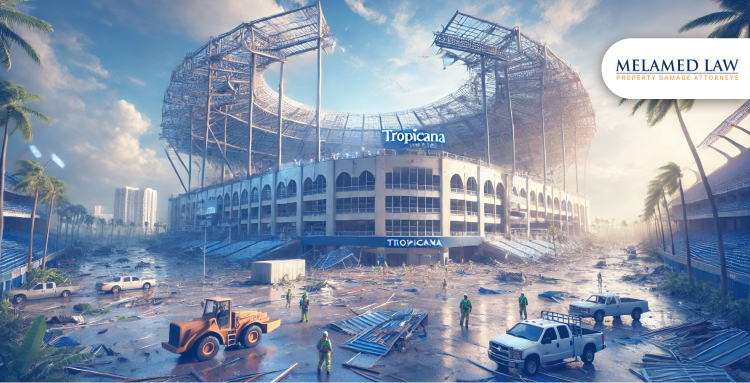
What is the plan for rebuilding Tropicana Field after the damage caused by Hurricane Milton?
When Hurricane Milton hit Florida, it didn’t just bring heavy winds and rain—it left behind widespread destruction, including damage to the iconic Tropicana Field. If your property was affected, you’re likely asking: Where do I begin? What are my rights? These are important questions to consider.
The good news is Florida law lays out clear steps to help you recover. From filing insurance claims to repairing your property and even taking legal action if needed, you have a path forward. Let’s walk you through the key steps to take right after a disaster like Milton, so you can rebuild with confidence.
(I) Assessing the Damage: What to Look for After a Hurricane
After a hurricane like Milton, the first thing you’ll want to do is carefully assess the damage to your property. While it’s crucial to stay safe during your inspection, you can begin by looking for visible damage to the roof, windows, siding, and other vulnerable areas of your home.
Initial Damage Assessment
Roof: Look for missing shingles, large debris, or holes in the roof. If you can safely do so, use a ladder to check areas you can’t reach from the ground, or consider hiring a professional to avoid any risks.
Windows & Siding: Look for cracks, broken glass, or dents. If your windows have been compromised, it’s vital to prevent water damage by boarding them up temporarily.
Exterior walls: Check for cracks or signs of water intrusion.
Safety tip: Don’t attempt to climb on the roof if it's unsafe. Stay on solid ground and check for any hazards, such as downed power lines or unstable structures.
Documenting Damage for Insurance
Once you've identified visible damage, the next crucial step is documenting everything thoroughly. Take clear photos from multiple angles of each damaged area. Make sure the photos are timestamped, as this can help with your insurance claim. Write down a detailed description of what’s been damaged and any structural issues.
Dealing with Severe Damage
If you spot foundation cracks or missing roof sections, contact a licensed contractor or structural engineer immediately. Avoid DIY repairs to ensure safety and avoid insurance issues. Florida law often requires professionals to assess damage that might affect safety, and they can help ensure you're meeting local building codes when making repairs. If you're unsure about what constitutes severe damage, err on the side of caution and seek expert advice.
(II) Reporting the Damage

After assessing the damage to your property, it’s time to report it to your insurance company. The sooner you start this process, the faster you can begin to recover.
➤ Filing Insurance Claims
Contact your insurance company immediately to report the damage. Use their 24/7 hotline, online portal, or mobile app to file your claim. Gather documentation, including photos, a list of damaged items, and repair estimates. Describe the damage in detail and keep copies of all communications. Review your policy to understand coverage and exclusions before submitting your claim.
Important note: If you have flood insurance, it’s important to file a separate claim specifically for water-related damage, as standard homeowner’s insurance doesn’t always cover flooding.
➤ Flood Damage Considerations
When it comes to hurricane-related damage in Florida, it’s important to understand that flood damage is treated differently under the law compared to wind damage. Flooding caused by the hurricane’s storm surge or rain is typically covered by flood insurance, which is separate from your standard homeowner’s policy.
Standard homeowner’s insurance generally covers damage caused by wind, such as a blown-out window or roof damage from high winds. However, damage caused by rising floodwaters won’t be covered unless you have a separate flood insurance policy through the National Flood Insurance Program (NFIP) or a private provider.
III) Repairing or Rebuilding Property: Legal and Financial Aspects

Once you've assessed the damage and filed your insurance claims, it’s time to think about how to repair or rebuild your property. Here's what you need to know:
Temporary Repairs
The priority after any storm is to secure your property and prevent further damage. Florida law allows homeowners to make temporary repairs immediately after a disaster to protect their property from additional harm—things like covering broken windows with plywood or tarping a leaking roof. These temporary repairs are considered reasonable and necessary steps to prevent further damage and to keep your home safe. Permanent repairs should be done by licensed contractors once the proper permits are secured.
Hiring Contractors
When it's time to hire contractors to make the permanent repairs, it's essential to work with licensed and insured professionals. Florida requires that all contractors be properly licensed to ensure they follow the state's strict building codes and standards. To verify if a contractor is licensed, you can check the Florida Department of Business and Professional Regulation (DBPR) website or ask to see their license number directly.
Pro tip: Make sure your contractor carries insurance to protect you in case of accidents during the repair process. If you hire an unlicensed contractor, you could face issues with insurance claims or future compliance with local building codes.
Permitting and Compliance
In Florida, permits are required for most structural repairs and reconstruction after a hurricane. This includes repairs to your roof, windows, electrical systems, plumbing, and any other significant changes to your property. The permitting process ensures that all repairs comply with Florida’s building codes, which are designed to make properties more resilient against future storms.
Before starting any major repairs, contact your local building department to find out which permits are needed. Be aware that failing to get the proper permits can lead to fines or delays in your repair process. Once the repairs are completed, a final inspection will typically be required to ensure everything meets the code. This inspection can be arranged through your local city or county office.
After a hurricane, local governments might also issue post-hurricane inspections to evaluate the damage to buildings in the area. These inspections can help determine whether a property is structurally safe or needs additional attention.
IV) Property Insurance in Florida: What You Need to Know

When it comes to recovering from hurricane damage, understanding your property insurance policy is key. Here’s what you need to know about insurance coverage, exclusions, and how to handle disputes.
Florida’s Insurance Laws
Florida’s property insurance laws are designed to protect homeowners and business owners in the aftermath of natural disasters like hurricanes. Key laws include the requirement for insurance policies to cover wind damage, which is common in hurricanes, as well as provisions related to timely claims handling. Additionally, Florida law requires insurers to provide clear and comprehensive explanations of any exclusions or limitations in coverage, so you know exactly what’s covered.
For businesses, Florida’s Commercial Property Insurance covers the building and business contents from damages like wind, hail, and rain, but it’s important to ensure that the policy also includes business interruption coverage, which helps you recover lost income if your business has to close temporarily.
Understanding Exclusions and Coverage Limits
One of the most important things to understand about your insurance policy is what’s not covered. For example, most standard homeowners’ policies cover wind damage but don’t cover flooding unless you’ve purchased separate flood insurance. In Florida, floods from hurricanes can cause extensive damage, so having a flood policy through the National Flood Insurance Program (NFIP) or a private insurer is crucial if you're in a flood-prone area.
Your policy may also include coverage limits—the maximum amount your insurer will pay for certain types of damage. For example, if your roof has extensive damage, your policy may limit how much it will pay for repairs. Always review the policy’s depreciation clauses, as some policies may only cover the current market value of the damaged property, rather than replacement cost. Be sure to understand your deductibles as well, which will impact how much you’ll have to pay out-of-pocket before your insurance kicks in.
Disputes with Insurance Companies
If your claim is denied, or if you feel you’re being underpaid for the damage, Florida’s bad faith insurance laws are there to protect you. Under these laws, insurers are required to act in good faith when handling claims. If an insurance company unfairly denies or delays payment, or if they offer a settlement that is unreasonably low, they could be violating Florida Statutes Chapter 624, which outlines the obligations of insurance companies in the state.
If you believe your insurer isn’t fulfilling its obligations, you have options. Start by appealing the decision directly to your insurance company. Many insurers have an internal review process that could resolve the issue. If this doesn’t work, you can file a complaint with the Florida Department of Financial Services (DFS), which oversees insurance companies in the state.
V) Financial Assistance and Relief Programs
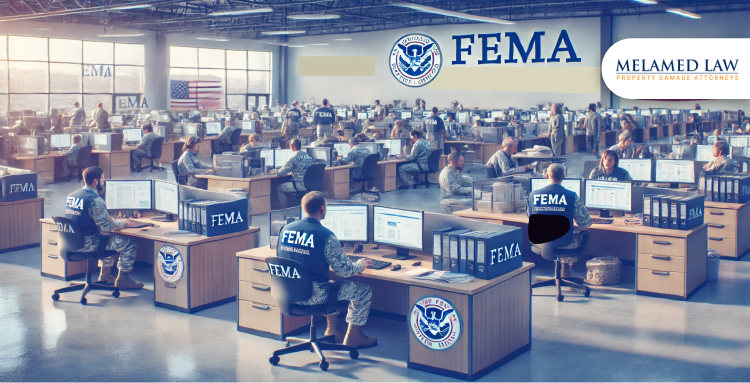
Recovering from hurricane damage can be overwhelming, but there’s help available through various state, federal, and local programs designed to assist homeowners, renters, and business owners. Here’s an overview of some key financial relief options to consider:
State and Federal Aid
After a disaster like Hurricane Milton, FEMA (Federal Emergency Management Agency) provides critical financial assistance for homeowners and renters who suffer property damage. FEMA can offer help with temporary housing, home repairs, and other essential needs that aren’t covered by insurance. To apply for FEMA aid, you can visit their website or call their disaster assistance hotline.
State programs may also offer financial help for specific needs, such as food, housing, or medical expenses. The Florida Division of Emergency Management (FDEM) often works in tandem with FEMA to provide resources.
Additionally, if you’re dealing with loss of income or property, there may be tax relief programs available, check with the IRS or consult a tax professional to find out how you can reduce your tax burden due to the hurricane’s impact.
Small Business Administration (SBA) Loans
If you own a business in Florida, the Small Business Administration (SBA) offers low-interest disaster loans to Florida homeowners and businesses for repairs and uncovered damages. These loans can also address personal property damage in business spaces. To apply, submit financial documents and damage descriptions through the SBA Disaster Assistance website or visit a local SBA center for guidance.
Tip: SBA loans are designed to be affordable, but it’s important to apply quickly, as they may have application deadlines that coincide with FEMA’s disaster assistance period.
Local Government Assistance
Local authorities are also a key resource in the recovery process. Many counties and cities offer programs for things like debris removal, temporary shelters, and support with municipal rebuilding efforts. You can contact your city’s Emergency Management Office to find out what specific programs are available in your area. In some cases, local governments may also provide grants or financial aid to help homeowners and businesses recover.
Some cities and counties offer no-cost debris removal or provide free consultations on how to safely and effectively clean up your property. If you're unsure where to begin, your local government’s website or disaster response hotline is the place to start.
VI) Legal Rights and Claims for Property Damage

If the damage caused by Hurricane Milton isn’t fully covered by insurance, or if you’re facing issues with your insurer, Florida law provides avenues to pursue compensation through legal action. Here's an overview of your options for legal recourse in property damage situations.
Suing for Damages
In Florida, homeowners and business owners can file a lawsuit if their insurance doesn’t fully cover their losses. If your insurer denies or underpays your claim, you can seek compensation from responsible parties, such as contractors or negligent property owners.
You also have the right to sue a contractor for breach of contract if they fail to meet their obligations. If your insurer acted in bad faith, you can seek damages for emotional distress and legal fees. Consult a legal expert to assess the strength of your case before proceeding.
Litigation Timeframes
If widespread damage affects many people similarly, such as a contractor failing to complete work on multiple homes, you may be able to join a class action lawsuit. Class actions allow multiple plaintiffs to pursue compensation together, making the process more efficient and cost-effective. Consult an attorney to determine if your case qualifies for class action status.
Claims Against Contractors
If a contractor fails to meet contract terms, whether through poor workmanship or missed deadlines, you have the right to file a claim. Florida law allows homeowners and business owners to pursue claims against contractors who don't fulfill their obligations or cause additional damage.
Before filing, gather documentation like the contract, photos of the work, and any communication showing the contractor's failure. If negligence or breach occurred, you may be entitled to compensation for repairs, lost time, and related costs. Contractors in Florida must be licensed and insured, so you can also file complaints with the Florida Department of Business and Professional Regulation (DBPR).
How Melamed Law PLLC Helps You Recovering and Moving Forward
Recovering from a hurricane might seem unmanageable, but Melamed Law PLLC is here to simplify the process and support you every step of the way. We help you navigate property damage claims, ensuring you understand your insurance coverage and advocating for fair compensation.
If your claim is denied or underpaid, our experienced attorneys can address disputes to protect your rights. Additionally, we guide you through compliance with Florida’s building codes and permitting requirements, helping to avoid legal complications during repairs or rebuilding. For reliable support after a hurricane, reach out to Melamed Law PLLC to handle the legal complexities while you focus on recovery.
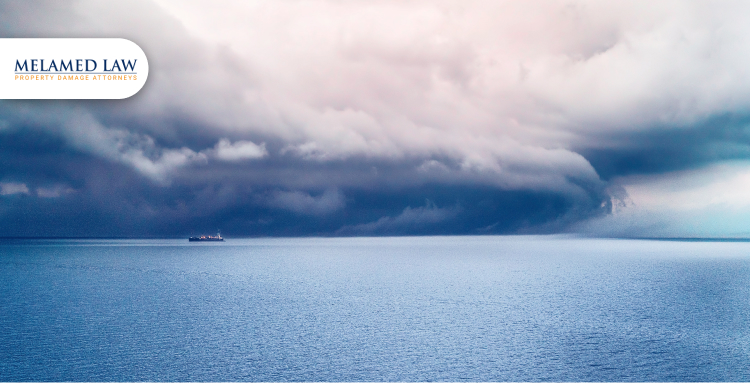
What are your tips for surviving a hurricane?
Living in Florida means preparing for hurricane season, which isn’t just a once-a-year task—it’s a reality that can hit at any moment. The winds pick up, the skies darken, and suddenly you’re facing the unpredictable power of Mother Nature. However as the storm passes and the dust settles, the aftermath can leave you feeling just as unsettled, especially when it comes to handling the legal side of hurricane damage.
Whether it’s dealing with insurance claims, property loss, or the frustration of complicated paperwork, it’s easy to feel swamped. But don’t worry— we’re here to walk you through everything you need to know to protect your home, keep your family safe, and face the storm head-on.
1) Building Your Hurricane Emergency Kit: Essentials for Safety and Comfort
When a hurricane is approaching, having a well-prepared emergency kit can ensure you have everything you need if conditions worsen. You can start with :
Gathering essential supplies
Basic supplies like non-perishable food and enough water for at least three days—aim for one gallon per person per day. Include flashlights, a first-aid kit, extra batteries, and hygiene items like soap, hand sanitizer, and toilet paper. These basics will cover immediate needs if access to stores is limited.
Additional Needs for Family Members
Consider any specific items that you or your family may need during a hurricane. Be sure to pack prescription medications, and gather important documents—such as insurance policies, ID, and medical records—in a waterproof container to protect them from water damage. If you have children, pets, or elderly family members, include items tailored to their needs, like baby formula, pet food, or extra medical supplies.
Organizing and Storing Your Kit
Store your emergency kit in an accessible location that everyone in your household knows. Make it a habit to check and update the kit at the start of each hurricane season, replacing any expired items and ensuring everything is in working order. Having a well-organized kit in a reliable spot will save precious time if a hurricane hits.
2) How to Create a Family Emergency Plan for Hurricanes

Having a family emergency plan can greatly reduce stress and confusion during a hurricane. Start by identifying the safest evacuation routes from your home and knowing the locations of nearby shelters. Make sure all family members are aware of these routes and any specific evacuation orders that may be given by local authorities. It's also wise to plan for different scenarios—such as the need to leave quickly—so everyone understands what to do.
Establishing a communication plan is equally important. In the event you become separated, having a reliable way to get in touch will provide reassurance. Designate a meeting point and make sure everyone has important contact information, including the numbers of emergency services and shelters.
Consider using a group messaging app or a designated out-of-town contact who can relay messages if local cell service is disrupted. With these preparations, you can stay connected and protect each other, no matter what happens.
3) Staying Informed: Get Real-Time Hurricane Updates
Keeping yourself informed during hurricane season is crucial for making the best decisions to protect your family and home. Rely on trusted sources for weather updates, such as the National Hurricane Center, local news channels, and emergency alert systems. Regularly checking these sources will keep you aware of any changes in the storm’s path or intensity and help you if needed.
Take advantage of technology by setting up alerts on weather apps or subscribing to notifications from local news stations. This ensures you receive real-time updates, even when you’re on the go.
Understand the difference between hurricane watches and warnings. A watch means that hurricane conditions are possible within the specified area, typically within 48 hours, giving you time to prepare.
A warning, on the other hand, indicates that hurricane conditions are expected, usually within 36 hours, and immediate action may be necessary. Knowing these distinctions can help you respond appropriately as a storm approaches.
4) Securing Your Home Against High Winds and Floods

Protecting your home from hurricane damage begins with reinforcing vulnerable areas. For windows and doors, consider using storm shutters, or if that isn't an option, securely board them up with plywood. This helps prevent broken glass and damage caused by high winds or flying debris. Make sure all doors are properly latched and, if possible, reinforced to withstand strong gusts.
Take a few moments to secure outdoor items like patio furniture, potted plants, and other loose objects, as these can quickly become dangerous projectiles in a storm. Either bring these items inside or anchor them securely.
For flood-prone areas, use sandbags to block water entry points and consider basement pumps to help remove any water that does get inside. Seal any gaps or cracks around doors and windows to further minimize potential property damage due to hurricanes.
5) Evacuation or Sheltering in Place: What You Need to Know
Understanding when to evacuate or stay put during a hurricane can be critical for your safety. If you’re advised to evacuate, it’s best to do so as early as possible to avoid congested roads and ensure you reach a safe location in good time. Follow the guidance of local officials, and be aware of designated evacuation routes and shelters in your area.
If you decide to shelter in place, choose a safe spot inside your home, preferably in an interior room on the lowest floor, away from windows and exterior walls. This will help shield you from strong winds and potential debris.
Keep your emergency kit and essential supplies within arm’s reach while you’re sheltering. This way, you’ll have quick access to food, water, and first-aid supplies if conditions worsen or you need to act fast.
6) How to Protect Important Documents and Valuables
Keeping important documents safe during a hurricane is essential.
Gather items like IDs, insurance policies, property deeds, and other critical paperwork.
Store these documents in waterproof containers to protect them from water damage.
Having intact documents can make post-storm recovery easier and less stressful.
Create digital backups for additional security.
Save copies of important documents in a secure cloud storage service.
This backup ensures access to critical information from any device, even if physical copies are lost or damaged.
7) Preparing for Utility Safety and Potential Power Outages
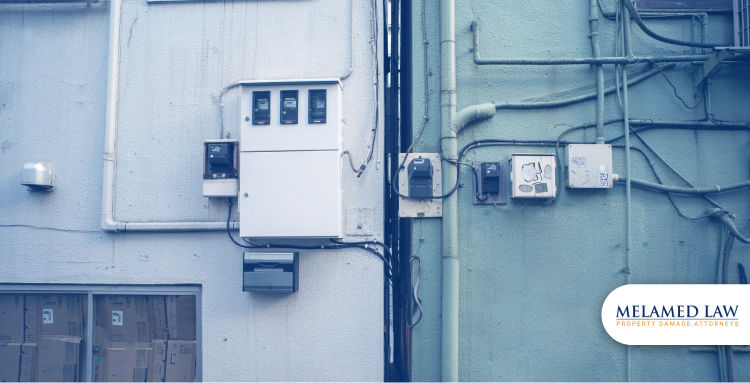
During a hurricane, knowing how and when to turn off your utilities can prevent further damage and keep your family safe. If advised by local officials or if flooding becomes a risk, be prepared to turn off your water, gas, and electricity. Make sure you know the locations of shut-off valves and switches, and follow safety procedures to avoid any hazards.
Power outages are common during storms, so it’s essential to be prepared. Stock up on candles, flashlights with extra batteries, and non-perishable food that doesn’t require cooking. This way, you’ll be able to keep your home lit, stay nourished, and maintain a sense of normalcy until the power is restored.
8) Staying Safe After a Hurricane: What Comes Next
Even after a hurricane passes, it’s crucial to stay alert and wait for official updates before venturing outside. Remain indoors until authorities give the all-clear, as dangerous conditions like high winds or flooding may still be present.
Once it’s safe to go out, exercise caution around hazardous areas. Be mindful of downed power lines, floodwaters, and scattered debris, as they can pose serious risks. If you’ve evacuated, follow guidance from local officials on re-entry procedures to ensure you return home safely and avoid potential hazards in the area.
9) Reviewing Your Hurricane Insurance and Financial Preparedness
Before hurricane season, take time to review your insurance coverage. Ensure that your policies for hurricane and flood protection are up to date and provide adequate coverage for your home and belongings. Having the right insurance in place helps you financially and makes it easier to claim damage recovery if a storm causes damage.
It’s also wise to be financially prepared for disruptions. Keep some cash on hand, as card systems or ATMs may be down during and after a hurricane. This will allow you to make necessary purchases even if electronic payment options aren’t available.
Melamed Law: Your Trusted Confidant For Hurricane Damage Claims
When a hurricane leaves its mark on your home or property, the last thing you want to worry about is the legal process. The paperwork, the red tape, and the stress of figuring out what comes next can feel like another storm in itself.
At Melamed Law, we’re not just here to handle your case—we’re here to guide you through every twist and turn, making sure you fully understand your rights and get the compensation you’re entitled to. Don’t navigate this storm alone. Reach out to Melamed Law today, and let us bring clarity when you need it most.
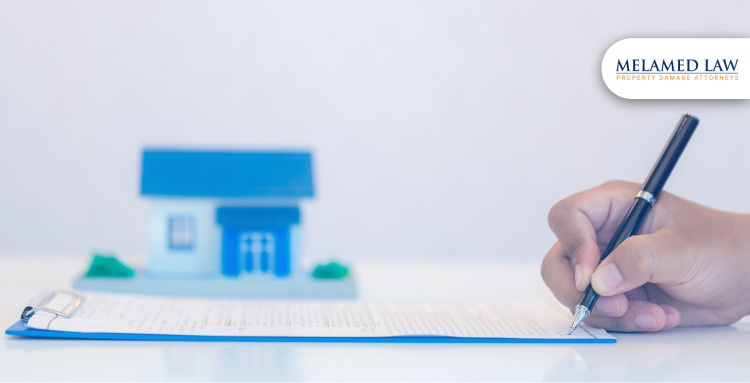
How does hurricane insurance coverage differ from standard homeowners insurance policies?
As a homeowner in Florida, preparing for hurricane season is more than just stocking up on supplies—it’s about ensuring your home and belongings are properly protected. While standard homeowners’ insurance provides essential coverage for a range of risks, it may not fully shield you from the unique and devastating impacts of a hurricane. With powerful winds, torrential rains, and the threat of flooding, it’s crucial to understand the differences between your basic homeowners’ policy and hurricane-specific coverage.
Let’s break down the critical distinctions, helping you feel confident that your home and belongings are covered—no matter what nature throws your way.
1) What is Standard Homeowners Insurance?
Standard homeowners insurance offers a sense of peace in everyday situations by protecting your home and belongings from a variety of risks. It typically covers damages from incidents like fire, theft, vandalism, and liability for injuries that occur on your property. For instance: If a tree falls on your roof during a storm, or if a neighbor is hurt while visiting, your homeowner's policy can step in to help cover repairs and medical expenses.
However, when it comes to hurricane season, things get a bit more complicated. While standard policies often include coverage for wind damage, they may not provide the full protection you need if a hurricane directly impacts your home. In many cases, standard homeowners insurance won’t cover damages specifically caused by a hurricane, such as severe windstorms or flooding from storm surges.
2) What is Hurricane Insurance?
Hurricane insurance is specifically designed to protect your home from the destructive forces of a hurricane, including the powerful winds and torrential rain that often come with these storms. This specialized coverage, unlike standard homeowners insurance, specifically targets hurricane-related damage to safeguard your property during these high-risk events. Typically, it safeguards your home against wind damage, structural damage, and storm-induced rainwater intrusion.
In many hurricane-prone areas, such as Tampa, this coverage doesn’t come automatically with a standard homeowners policy. Instead, hurricane insurance is often purchased as an add-on, separate rider, or even as a standalone policy. This means you'll need to ensure you have the right coverage in place before the storm season arrives.
3) Foremost Differences Between Hurricane Insurance and Standard Homeowners Insurance

Wind Damage Coverage
When a powerful storm like a hurricane rolls through, wind damage is one of the most common and costly types of destruction.
Standard homeowners insurance typically includes coverage for general wind damage, such as the damage caused by a regular storm or fallen trees. However, when it comes to hurricanes, the coverage can be more limited. Many homeowners find that damage caused by hurricanes—particularly high winds—may be excluded or subject to special restrictions, such as lower payout limits. This could mean that significant damage to your roof or windows during a hurricane might not be fully covered, leaving you responsible for more of the repair costs.
hurricane insurance is specifically designed to handle the unique risks associated with these severe storms. It covers wind damage caused by hurricanes, including the violent gusts that can tear off shingles or send debris flying. While hurricane insurance provides more comprehensive protection for wind-related damage, it often comes with its own set of rules, such as a separate hurricane deductible.
Flood Damage
One of the most devastating effects of hurricanes is the flooding that often follows, particularly from storm surges and heavy rainfall.
Standard homeowners insurance, while offering protection for many types of damage, does not include coverage for flood-related issues. This means that if your home is inundated with water due to rising tides or heavy rains, you could be left with significant repair costs—nothing more than your standard policy to help.
Hurricane insurance, however, addresses this gap by focusing specifically on damages caused by hurricanes, including the potential flooding that comes along with them. But here's the catch: while hurricane insurance may provide coverage for wind damage, it typically doesn't cover flooding on its own.
For full protection, homeowners in flood-prone areas, like Miami or the Florida Keys, often need to purchase a separate flood insurance policy. This policy is designed to protect your home from water damage, whether it’s caused by storm surges, overflowing rivers, or heavy rain.
Deductibles
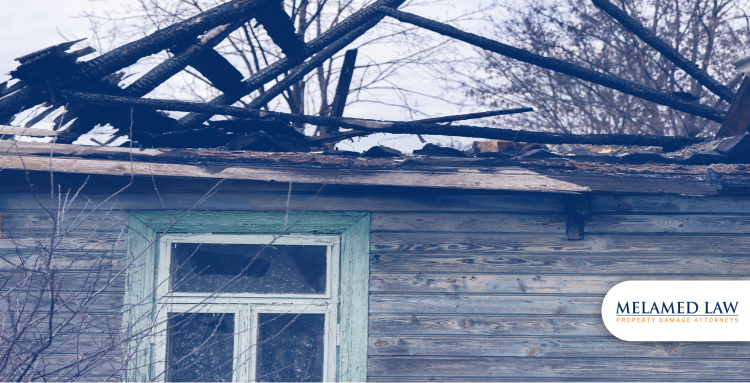
In the context of insurance claims, a deductible is the portion of costs you are responsible for paying before your insurance coverage applies.
With standard homeowners insurance, the deductible is usually a flat amount or a small percentage of your home’s insured value. For example, if your home is valued at $300,000, a standard deductible might be $1,000 or 1% of the home’s value, meaning you would pay that amount before your insurance pays the rest for repairs or replacements.
However, with hurricane insurance, the rules change. Since hurricanes are considered high-risk events, this type of insurance typically comes with a higher deductible, often calculated as a percentage of your home’s insured value (e.g., 2-5%). For example, if your home is insured for $300,000 and your hurricane deductible is 3%, you would need to pay $9,000 out of pocket before your hurricane insurance would cover the damage.
Coverage for Additional Living Expenses
When a disaster strikes and your home becomes uninhabitable, one of the most immediate concerns is where you’ll stay and how you’ll manage day-to-day life.
Standard homeowners insurance often includes coverage for additional living expenses (ALE), which helps pay for temporary housing, meals, and other necessities while your home is being repaired. However, this coverage is usually not tied to specific events, meaning it could apply in any situation where your home is unlivable—whether it's due to a fire, theft, or another covered incident, but not necessarily limited to the damage caused by a hurricane.
Hurricane insurance takes this a step further by offering coverage for additional living expenses directly tied to hurricane-related damage. Your hurricane insurance can cover costs like temporary housing, food, and even transportation if a hurricane severely damages your home and forces you to relocate.
4) Exclusions and Limitations
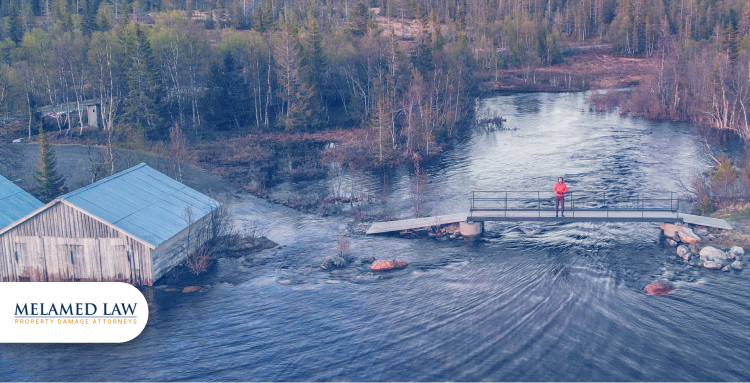
Both standard homeowners insurance and hurricane insurance offer essential protection, but they come with exclusions and limitations, particularly when it comes to severe weather events like hurricanes.
Standard homeowners insurance typically excludes flood damage, which is a common risk during hurricanes, along with other natural disasters like earthquakes or landslides. Homeowners in flood-prone areas or near fault lines need additional coverage, such as flood or earthquake insurance, to fill these gaps.
Hurricane insurance may not cover secondary damage from events like earthquakes, mudslides, or civil unrest, but it does cover damage from wind, rain, and storm surges caused by hurricanes.
Choose The Best Policies With Melamed Law
In Florida, understanding the differences between hurricane and standard homeowners insurance is vital for protecting your home. Standard policies typically cover risks such as fire, theft, and general wind damage, but they often exclude hurricane-related threats like flooding and may limit wind coverage. Hurricane insurance specifically covers these risks, though it typically has higher deductibles and exclusions for secondary damage like earthquakes.
For comprehensive protection, especially in hurricane-prone areas, having both types of coverage is essential. At Melamed Law, we guide homeowners through the complexities of insurance, offering personalized advice to help you understand your options and fill any gaps in your coverage. With our expertise, you can confidently prepare for storm season and fully protect yourself. Reach out to us for a free consultation, without worrying about money. You only pay us when we give you a win.
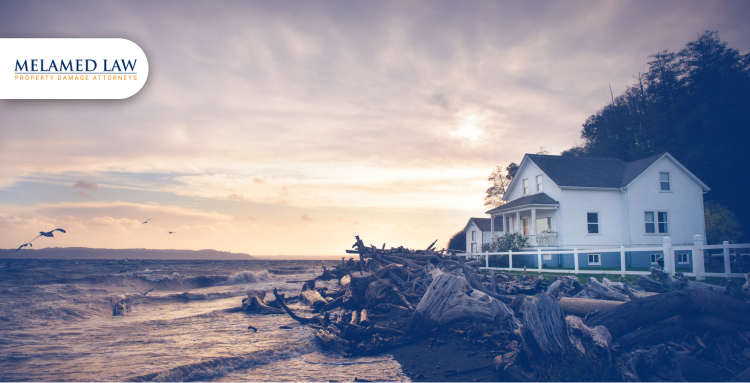
What are some strategies or techniques for preventing pressurization and damage to homes during hurricanes?
Hurricanes are a constant, looming threat for Florida families, with the state facing a 46% chance each year of a direct strike. For those of us who call Florida home, hurricane season isn’t just a season; it’s a time of concern, preparation, and the hope that our homes—and our loved ones—will stay safe. The strongest hurricanes often strike in September and October, as they did in 2004 when four major storms made landfall.
Preparing your home to withstand these powerful forces isn’t just about following building codes or checking items off a list. It’s about protecting your sanctuary, the place where your family finds comfort.
Section 1: Reinforce Doors, Windows, and Other Openings
When a hurricane hits, even the smallest opening in your home can allow powerful winds to enter, increasing the risk of pressurization damage. Reinforcing doors, windows, and other entry points is essential to keeping your home safe.
Install Impact-Resistant Windows and Doors
Install impact-resistant windows and doors to boost your chances of surviving a hurricane. These hurricane-rated materials withstand high winds and debris impacts, preventing wind from entering and reducing the risk of dangerous pressure buildup. Impact-resistant glass uses a durable, layered design that stays intact even if it cracks, creating a strong barrier.
Hire a professional experienced with Florida’s building standards to handle the installation. They will recommend the best materials for our climate. Choose products labeled “hurricane-rated” or “impact-resistant” to ensure they meet rigorous testing standards. While the initial cost may be higher, the added safety and peace of mind make it a smart investment for any Florida homeowner.
Add Storm Shutters
Storm shutters are another excellent option for reinforcing your home. Available in various types, such as roll-down, accordion, and panel shutters, they provide an extra layer of defense by securely covering windows and doors. Deploy roll-down shutters quickly to ensure continuous protection, and use accordion shutters for their durability and ease of operation.
When selecting storm shutters, ensure they meet Florida’s strict hurricane building codes. Look for products tested for high wind speeds, and consider factors like ease of installation and long-term durability. Some homeowners prefer permanent options like roll-down or accordion shutters for convenience, while others opt for removable panel shutters. Whatever your choice, storm shutters provide essential protection when you need it most.
Seal Gaps and Cracks
Sealing gaps around doors, windows, and vents may seem simple, but it plays a significant role in protecting against both wind and water intrusion. Caulking these small openings prevents air leaks, helping to avoid pressurization issues during a hurricane. Start by inspecting around window frames, door frames, and any ventilation points to identify potential leaks.
To protect against hurricane damage, seal gaps with weather-resistant caulk for a solid, wind-resistant barrier. For larger areas, consider hiring a professional to create a solid, wind-resistant barrier, which can make a significant difference when a hurricane hits.
Section 2: Strengthen Roof and Gable Ends
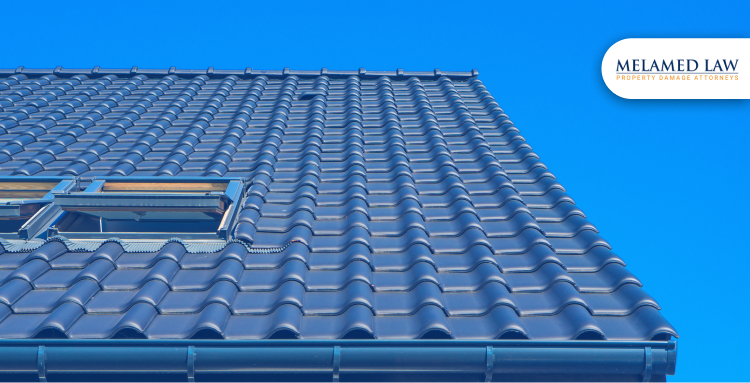
Hurricane winds can lift or tear off your roof, making it one of the most vulnerable parts of your home on hurricane day.
⇒ Use Roof Straps or Clips
Roof straps or clips, also known as roof-to-wall connectors, are essential tools for hurricane-proofing your home. By installing metal straps or clips at key points along the roof, you help prevent the roof from lifting off under pressure, which is a common issue during severe storms.
When choosing materials, look for galvanized steel clips or straps specifically designed for hurricane resistance. These materials are durable and resistant to corrosion, making them ideal for Florida’s coastal climate. For optimal results, hire a professional to install the connectors, for proper placement.
⇒ Upgrade to Wind-Resistant Roof Coverings
Another effective way to reinforce your roof is by upgrading to wind-resistant roofing materials, such as metal roofing or hurricane-rated shingles. Metal roofing is known for its durability and ability to withstand high winds, while hurricane-rated shingles are specially designed to hold up under extreme weather conditions.
For the best results, consider hiring a licensed contractor to handle the installation. While the investment may be higher, the long-term protection these materials offer can save on costly repairs down the road.
⇒ Reinforce Gable End Bracing
Gable ends—the triangular section of wall beneath a peaked roof—are particularly vulnerable to wind pressure during hurricanes. Without adequate support, these walls can collapse, putting the rest of the structure at risk. Reinforcing your gable ends with bracing is a proactive way to enhance stability.
To brace gable ends, add diagonal supports across the inside of the wall and connect them to the rafters. This added bracing creates a more rigid structure, reducing the risk of collapse in high winds. While some experienced DIY homeowners may tackle this on their own, hiring a professional ensures that the work is done according to building standards.
Section 3: Establish a Continuous Load Path for Structural Integrity
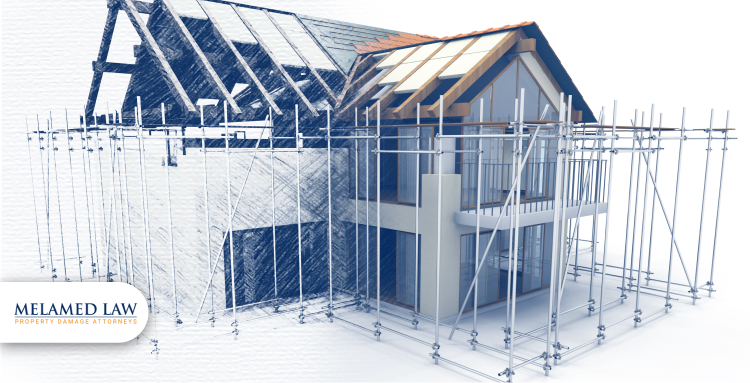
In the face of a hurricane, one of the best ways to ensure your home stands strong against high winds is by establishing a continuous load path that minimizes the risk of structural failure, making your home more resilient when the storm arrives.
Anchor All Building Components Together
Essentially, a continuous load path connects all key structural components—roof, walls, floors, and foundation—to safely transfer wind loads through each part of the building. Without a strong connection between these elements, parts of your home could fail independently, leading to greater damage.
By securely anchoring your roof to the walls, the walls to the foundation, and ensuring the floors are connected throughout, you create a cohesive structure that endures wind loads more effectively.
Install Hurricane Clips and Ties
By securing key parts of your home's framework together, hurricane clips and ties specifically help create a continuous load path. These metal fasteners secure the roof to the walls and the walls to the foundation, guaranteeing that no part of the home becomes vulnerable during a storm.
When selecting clips and ties, look for those rated for high wind speeds and designed to meet Florida’s building code standards. Installation can be straightforward, but for the best results, consider consulting a professional to reduce risks during severe storms.
Section 4: Install a Wind-Pressure Relief System
During a hurricane, rapid changes in wind speed and direction can create dangerous pressure imbalances inside your home. These imbalances can cause significant damage, especially to roofs and walls.
Use Pressure-Relief Vents
Designed to allow air to flow freely between the inside and outside of your home, pressure-relief vents help equalize the pressure during a storm. By preventing air from becoming trapped inside, these vents reduce the likelihood of a build-up of pressure that could lead to roof or wall failure. Look for models approved by Florida's building codes that can withstand high winds when selecting pressure-relief vents.
There are different types of pressure relief systems to suit various home designs.
For homes with attics, ridge vents or eave vents may be the most effective, as they allow hot air and pressure to escape naturally.
For homes without an attic or with larger openings, installing pressure-relief vents in the walls can help ensure that air flows smoothly through the house. Consult with a contractor to determine the best solution for your home’s layout and structure.
Reinforce the Garage Door
The garage door is one of the most vulnerable areas of your home during hurricane season. A braced or hurricane-rated garage door is crucial for preventing pressure buildup that could cause the door to collapse or be blown in. Without proper reinforcement, the garage door can be a weak point that allows wind to enter, compromising the rest of the home’s structural integrity.
Hurricane-rated garage doors resist high winds, but you can reinforce an existing door with a bracing kit for added stability. For proper alignment and secure installation, consider having it done by an expert.
Section 5: Prepare the Yard to Minimize Debris Impact
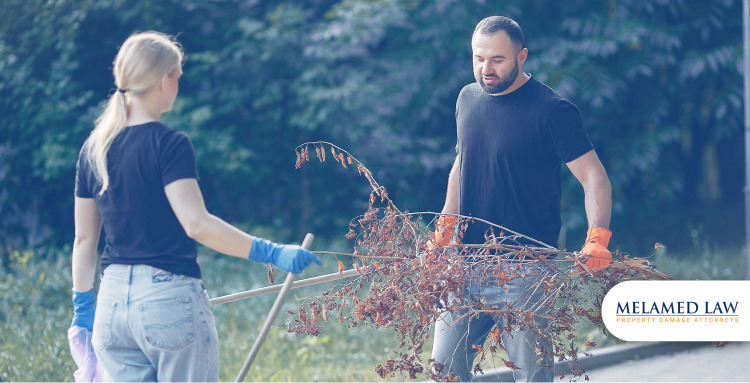
Flying debris is one of the leading causes of damage during a hurricane. Here’s how you can prepare your yard to keep debris from scattering across your yard during a storm.
✔ Clear Loose Items and Trim Trees
Before the storm hits, secure or store loose yard items like furniture, grills, small outdoor decor, toys, and planters to prevent them from becoming projectiles. Trim trees and remove weak branches, focusing on those near your home to reduce potential damage.
✔ Reinforce Fences and Inspect Trees
Inspect posts, gates, and any loose sections of your fence to ensure proper reinforcement, thereby reducing hurricane risks. Secure posts deeply in the ground and add bracing to older or damaged fences. Additionally, check your trees for instability—look for leaning or cracked trunks—and remove any weak trees or branches that could threaten your home during high winds. Hire a professional tree service if needed, to safely prune or remove trees that are too large or unsafe to handle on your own.
Section 6: Consider an Exterior Wind Barrier for Additional Protection
Creating an exterior wind barrier can provide extra protection from the powerful winds of a hurricane. These additional measures can significantly reduce the impact of storm winds on your property.
⇒ Install Windscreens or Barricades
Windscreens and barricades deflect and redirect hurricane winds away from vulnerable areas like windows and doors, creating a protective shield that absorbs or redirects wind forces. You can install them around your home's perimeter or overexposed windows to minimize the impact of storms. While they won’t replace the need for shutters or impact-resistant windows, they can provide an additional layer of defense that reduces wind pressure on your home’s vulnerable points.
⇒ Create Natural Windbreakers with Landscaping
Another effective method of reducing wind impact is through strategic landscaping. By planting trees and shrubs in certain areas around your home, you can create natural windbreaks that reduce the wind speed before it reaches your house. This not only helps protect your home but also adds to the aesthetic appeal of your property.
For effective windbreaks, choose plant species that are resilient to Florida’s climate and capable of withstanding strong winds. Palms, hardwood trees, and shrubs with dense foliage work well as natural barriers. Position windbreaks to create a buffer on the windward side of your home, where wind impact is greatest. With the right planning, these natural windbreaks can serve as an attractive and practical solution for reducing wind damage.
How Melamed Law Can Help Protect Your Rights and Home After a Hurricane
If your home sustains damage despite your efforts, Melamed Law is here to help. We specialize in property damage claims and support you through the often complex process of filing insurance claims to ensure you get the recovery you deserve. Our experienced attorneys can assist in handling disputes with insurance companies, whether it’s a denial of coverage or insufficient compensation. We also help property owners handle the legal aspects of rebuilding, ensuring compliance with Florida’s building codes and regulations.
If you’ve suffered property damage due to a hurricane, contact Melamed Law to discuss your options and get the support you need during this challenging time.
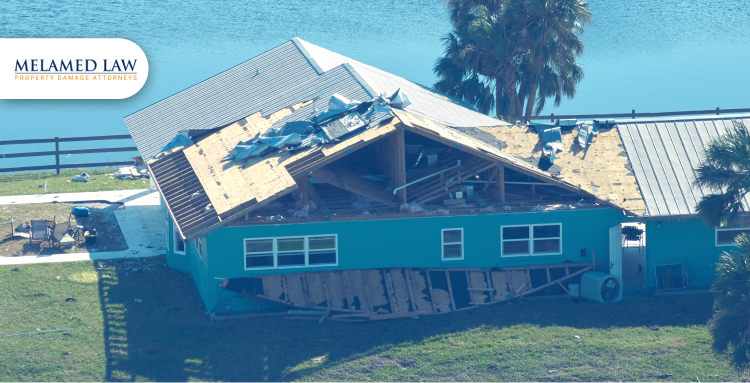
What if my property damage claim is denied in Florida
Claim denials are unfortunately more common than they should be, leaving many Florida residents in a tough spot when they need support the most. Sometimes, the insurance company cites issues like missing documentation or excluded damages, or they may claim the damage doesn’t meet policy criteria. Whatever the reason, it’s frustrating and often confusing for policyholders trying to protect their property and finances.
If you’re facing a denied property damage claim, it’s essential to know that this doesn’t have to be the end of the road. With the right steps—and a clear understanding of your rights—you can challenge a denial and possibly secure the support you need to rebuild.
1) Uncover the Reasons for Claim Denial
(I) Review Your Denial Letter Carefully
The first and most crucial step after receiving a denial is to carefully review the denial letter from your insurance company. This letter should clearly outline the reasons for the denial, offering insight into the insurer’s rationale. Often, these letters reference specific policy clauses or exclusions relevant to your case. While the language can be technical and overwhelming, understanding its content is essential for determining your next steps.
Take the time to pinpoint any specific issues noted, such as missing documentation, insufficient proof, or unmet policy conditions. If the language is unclear or difficult to interpret, don’t hesitate to contact your insurance company for clarification. Insurance policies can be complex, and seeking a clearer explanation of their decision is always a wise move.
(II) Common Reasons for Property Damage Claim Denial
While each situation is unique, property damage claims are typically denied for a handful of common reasons.
Policy Exclusions
Many insurance policies have specific exclusions for certain types of damage. For instance, a standard homeowners’ policy may exclude coverage for damages caused by flooding or particular types of mold. Reviewing your policy’s list of exclusions can clarify if the damage you’re claiming falls outside of the coverage provided. Understanding these exclusions early on can save time and set realistic expectations when filing a claim.
Insufficient Maintenance
Insurance providers generally expect homeowners to maintain their properties to a reasonable standard. Claims for damages that stem from a lack of upkeep—such as roof leaks due to worn-out materials or plumbing issues from neglected maintenance—are often denied under this clause. Insurers may view these damages as preventable, placing them outside the boundaries of coverage. Regular maintenance is key to avoiding this situation and ensuring your property remains protected.
Missing Documentation
Sometimes, a claim may be denied simply because there wasn’t enough supporting documentation. Missing items like photographs, repair estimates, or detailed descriptions can make it difficult for the insurer to fully assess and validate the claim. While this can be frustrating, it’s usually fixable. Gathering additional documentation and requesting a reconsideration may strengthen your case and move the claim forward.
Missed Deadlines
Insurance policies typically set specific deadlines for filing a claim after damage occurs. Missing these deadlines can be a reason for denial, as it may impact the insurer’s ability to investigate promptly or raise questions about the accuracy of the claim. However, if your claim was denied due to timing, it’s often worth asking for an exception—especially if extenuating circumstances caused the delay. Many insurers are open to considering these situations on a case-by-case basis.
2) Steps to Take When Your Claim is Denied

If your property damage claim was denied, gathering more evidence can often make a meaningful difference. The right documentation can strengthen your position and potentially lead to a favorable outcome if you seek a re-evaluation.
Gather Additional Evidence
Start by taking clear, comprehensive photographs of the damage as soon as possible after the incident. Capture multiple angles to show both the details and the broader context of the affected areas. If available, receipts and invoices for repairs or temporary fixes can help support your claim by demonstrating your incurred costs.
Additionally, any prior maintenance records or home inspection reports can showcase the property’s condition before the incident, countering claims that the damage resulted from neglect.
In some cases, hiring an independent assessor or contractor to evaluate the damage can be beneficial. Their unbiased assessment can provide expert insights into the extent and cause of the damage, helping to substantiate your claim. Having this third-party evidence on hand can significantly strengthen your case, showing that you’ve thoroughly documented the true extent of the damage.
Request a Re-Evaluation of Your Claim
After gathering all relevant evidence, you can request a re-evaluation of your claim from the insurance company. This is a common practice, and insurers are often willing to reconsider claims with new evidence. Reach out to your insurance provider to start the process, clearly stating that you have additional documentation or clarifications regarding any points that may have been misunderstood.
When making your request, be organized and concise. Present your new evidence along with a clear summary explaining how it addresses the original reasons for denial—such as documentation of the incident date, detailed repair receipts, or findings from an independent assessment.
This proactive approach demonstrates your commitment to resolving the claim and shows that you’ve taken responsible steps to address the insurer’s concerns. While a re-evaluation doesn’t guarantee approval, it often leads to a more equitable review and successfully overturns an initial denial.
3) Know Your Rights: Florida’s Alternative Dispute Resolution Options
If your property damage claim remains unresolved, Florida law provides alternative dispute resolution (ADR) options to help you reach an agreement without going to court. These options—mediation and appraisal—can be valuable tools for resolving differences with your insurance company, often leading to a fairer outcome with less time, cost, and stress than litigation.
Consider Mediation
Mediation is a process where you and your insurance company meet with a neutral third party—a trained mediator—who helps both sides work toward a mutually agreeable resolution. Unlike a judge, the mediator doesn’t make binding decisions but instead facilitates open dialogue, allowing each party to share their concerns and priorities.
In Florida, mediation is encouraged for property damage disputes, as it’s often faster and more cost-effective than going to court. This process also empowers you to actively participate in the negotiation, which can be beneficial if you believe your claim was unfairly denied or undervalued.
During mediation, you’ll have the opportunity to present your evidence, explain the impact of the denial, and clarify why the claim deserves reconsideration. While it doesn’t guarantee a resolution, mediation frequently results in satisfactory outcomes. And if no agreement is reached, you still have other avenues available.
Request an Appraisal
If your insurance company accepts your claim but you disagree on the compensation amount, an appraisal can be an effective way to resolve this dispute. Through the appraisal process, both you and the insurer select impartial appraisers who assess the damage and estimate repair costs. These appraisers work together to determine a fair value, helping to settle differences without further escalation.
In Florida, the appraisal process is especially valuable if you believe your claim has been undervalued. This process is binding, meaning both parties agree to accept the appraisers' final decision. Appraisal is particularly useful when the disagreement is over repair costs rather than the claim’s validity.
4) File a Complaint with the Florida Department of Financial Services (DFS)

If you’ve exhausted all other avenues for resolving your property damage claim and still feel unfairly treated, filing a complaint with the Florida Department of Financial Services (DFS) may be your next step.
How to File a Complaint with the DFS
Filing a complaint is designed to be straightforward and accessible. Start by visiting the DFS website, where you’ll find a section dedicated to complaints against insurers. You can submit your complaint online, which is usually the fastest option, or by mail or phone if you prefer. When completing the form, include details like your policy number, a clear description of your claim, and copies of any relevant documents, such as the denial letter or supporting evidence. A thorough, organized submission will help the DFS investigate effectively.
The Role of the DFS in Investigating Unfair Practices
Once your complaint is submitted, the DFS will assess it to determine if further investigation is warranted. They have the authority to review insurers’ practices to ensure compliance with Florida law. If they uncover evidence of unfair practices, such as unjustified denials, lack of communication, or unreasonable delays, they can take regulatory action against the insurer.
While the DFS cannot award financial compensation, their involvement often encourages insurers to reconsider a denied or undervalued claim. Filing a complaint signals to your insurance company that you are serious about protecting your rights, often leading to a renewed willingness to negotiate fairly.
5) When to Call in Melamed Law: Your Ally for Property Damage Disputes
One of the key advantages of securing legal representation is our ability to negotiate effectively with your insurance company on your behalf. We understand the tactics insurers often use to minimize payouts and leverage our extensive experience to advocate vigorously for the fair compensation you deserve.
With Melamed Law on your side, you won’t be just another claim number lost in the system. We create a tailored strategy specifically designed for your unique situation, significantly enhancing your chances of achieving a favorable resolution.
If you suspect your insurance company is engaging in bad faith practices, it’s crucial to consult with Melamed Law promptly. Signs of bad faith can include unnecessary delays in processing your claim, low-ball offers that don’t accurately reflect your damages, or unjustified denials.
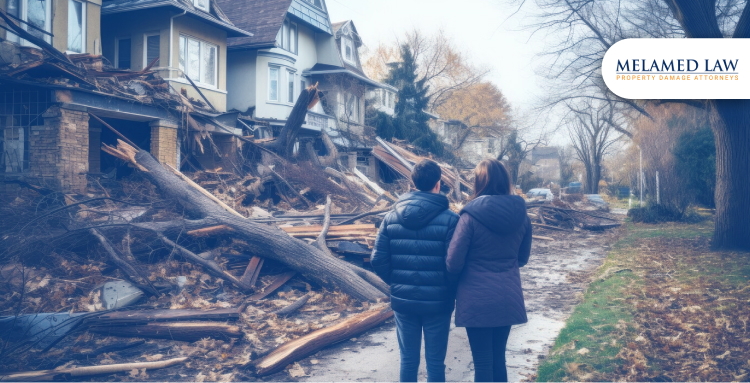
How Florida's Hurricane Season Affects Property Insurance Litigation
Hurricane season in Florida isn’t just about surviving the wind and rain—it’s about picking up the pieces afterward. From broken windows to flooded homes, the real battle often starts once the storm passes. Property owners turn to their insurance companies, expecting help, but instead, many find themselves facing denials, delays, or lowball offers. It’s frustrating when, after protecting your home and paying premiums year after year, your claim gets undervalued or denied altogether.
Now let’s dive into how Florida’s hurricane season impacts property insurance litigation, what policyholders should expect, and how to navigate these challenges effectively.
Florida’s Insurance Laws: Timelines and Regulations That Affect Your Claim
In Florida, when it comes to hurricane damage, time isn’t on your side—there are strict deadlines that homeowners need to follow to keep their claims valid. First, you’ve only got one year from the date you discover the damage to report your claim. That may sound like plenty of time, but after a storm, it’s easy to get overwhelmed with repairs, estimates, and trying to get your life back on track.
Now, if your insurance company plays hardball or delays processing your claim, you still have some breathing room. Florida law gives you five years from the date of the storm to file a lawsuit if you believe your insurer didn’t do right by you. But waiting too long to act can weaken your case, which is why it's important to stay on top of these deadlines.
There’s another lifeline for you - mediation. Before things get messy in court, Florida allows homeowners to request mediation with their insurer to try and work things out. This can be a great option, but it’s not always straightforward.
Key Insurance Coverages for Hurricane Damage: Are You Protected?

When it comes to hurricane damage, understanding your insurance coverage can feel like trying to read a foreign language. Each policy has different rules, exclusions, and fine print, and if you don’t know what to look for, you could end up with less compensation than you deserve. Let’s break down some of the key coverages you’ll need to know after a storm.
Windstorm Coverage
Windstorm coverage helps pay for damage caused by hurricane winds—think roof damage, broken windows, or downed fences. It sounds simple, but insurance companies often try to downplay the extent of wind damage or say the damage was caused by something else (like pre-existing wear and tear) to reduce payouts. These disputes can drag on for months unless you have someone fighting for you.
Hurricane Deductible
In Florida, most policies include a hurricane deductible, which is usually a percentage of your home’s insured value rather than a flat dollar amount. This can catch a lot of homeowners off guard because it means you could be on the hook for thousands of dollars before your insurance even kicks in. Knowing how your deductible works—and planning ahead—can make a big difference when you’re ready to file a claim.
Flood Insurance vs. Homeowner’s Policy
Here’s a major headache- most homeowner’s policies don’t cover flood damage. That means if your home gets flooded due to a storm surge, you’ll need separate flood insurance (usually through FEMA) to cover the repairs. This gap in coverage results in one of the most frequent disputes we encounter—insurers often contend that the damage was caused by flooding rather than wind, seeking to deny your claim in the process.
Loss of Use Coverage
If your home becomes uninhabitable after a hurricane, loss of use coverage can help with temporary living expenses—think hotel stays, meals, and other essentials. But, as you can guess, insurers aren’t always quick to offer these benefits without a fight.
Common Disputes Leading to Property Insurance Litigation

Dealing with insurance companies after a hurricane can feel like a storm all on its own. Too often, instead of getting the support you were promised, many homeowners experience frustrating delays, unjust denials, or offers that fall short of covering necessary repairs. Below are some of the most common disputes faced by homeowners—and how Melamed Law can assist you in resolving them.
Hurricane vs. Flood Damage Disputes
One of the oldest tactics in the insurance playbook is to classify damage as “flood-related,” thereby shifting the responsibility to flood insurance, which many homeowners may not even possess. For instance, if wind damage creates a breach in your roof that allows rain to enter, the insurer might contend that it’s water damage resulting from flooding, which is typically not covered by standard policies. This ongoing back-and-forth can leave you in a precarious position, with no payout in sight.
Underpaid Claims
Even when your claim is approved, insurers frequently respond with low-ball offers that barely cover the necessary repairs to your home. They may rely on cursory estimates or adjusters who underestimate the extent of the damage, hoping you will simply accept their offer and move on. However, your property—and your peace of mind—are worth significantly more than that.
Deductible Conflicts
In Florida, hurricane deductibles are typically higher than standard deductibles, often calculated as a percentage of your home’s insured value. Many homeowners are taken aback when they discover the substantial amount they must pay out of pocket before their insurance coverage activates. Additionally, insurers may miscalculate your deductible or apply it in an inequitable manner, leaving you in a difficult position as you scramble to cover the difference.
How Melamed Law Fights for You
With years of experience negotiating and litigating property insurance disputes, we know exactly how to counter these tactics and secure the compensation you deserve. Whether it’s challenging misclassified damage, negotiating fair repair costs, or holding insurers accountable for high deductibles, we fight to make sure you’re treated fairly.
Bad-Faith Insurance Practices: Know Your Rights as a Homeowner

Navigating the aftermath of a hurricane can be tough, but dealing with an insurance company that doesn’t play fair is an even bigger headache. Bad-faith practices are more common than you might think, and they can leave homeowners feeling frustrated and powerless. Here’s what you need to know about these practices and your rights as a policyholder.
Examples of Bad-Faith Practices
Bad faith can manifest in numerous ways. Insurers may unnecessarily delay processing your claim, leaving you in a state of uncertainty as you attempt to rebuild your life. In some cases, they might outright deny valid claims without conducting a thorough investigation, using vague excuses or citing fine print that is not applicable. Imagine having a legitimate claim denied simply because the adjuster failed to verify all the facts—this constitutes bad faith, and it is entirely unacceptable.
Legal Remedies for Bad Faith
If you find yourself a victim of bad faith, you’re not without options. Florida law allows homeowners to pursue extra-contractual damages against insurers that act in bad faith. This means you could potentially recover more than just your initial claim amount—think about damages for emotional distress, financial losses, and even punitive damages designed to punish the insurer for their misconduct.
How Melamed Law Fights for Your Justice
We take bad faith seriously. We know how to relentlessly pursue insurers that try to sidestep their responsibilities. Our team fights for your rights and ensures that you receive the compensation you need, no matter how many tactics the insurer throws at you. When you face an unfair denial or a delay that drags on, we’re here to hold them accountable. Your fight is our fight, and we won’t rest until justice is served.
Recent Changes in Florida’s Insurance Landscape: What You Should Know

The insurance landscape in Florida is constantly evolving, especially in the wake of hurricane seasons that leave behind damage and disputes. Recent legislative changes can create additional hurdles for homeowners trying to navigate their insurance claims. Here’s what you need to know about these changes and how they impact you.
Attorney Fees Restrictions
One of the most significant changes has been the restriction on attorney fees in small disputes. This means that if your claim is below a certain dollar amount, you may find yourself navigating the situation without legal representation—making it significantly more difficult to contest lowball offers or unjust denials. This can discourage homeowners from seeking legal assistance, ultimately leaving them at the mercy of their insurance companies.
Assignment of Benefits (AOB) Reform
Another key change is the reform of the Assignment of Benefits (AOB) process. AOB allows homeowners to assign their insurance benefits to contractors to expedite repairs. While this can streamline the process, it also opened the door to abuse—contractors could inflate costs and file claims without proper oversight. The recent reforms aim to protect homeowners from potential fraud, but they can complicate the relationship between homeowners and contractors, creating further challenges when filing claims.
How Melamed Law Fights for Your Justice
At Melamed Law, we stay on top of these changes to ensure our clients are protected. We understand how the latest restrictions and reforms can impact your rights as a homeowner. Whether you’re facing a small dispute that could use legal insight or dealing with AOB issues, we’re here to advocate for your best interests. With our finger on the pulse of Florida’s ever-changing insurance landscape, you can trust us to provide the guidance you need to secure a fair resolution after the storm. Let us help you turn the tide in your favor.
Legal Support with Melamed Law – Your Advocate During Hurricane Season
Dealing with the aftermath of a hurricane can be extremely stressful, particularly when it comes to insurance claims. The importance of having legal guidance during this critical time cannot be overstated. Insurance policies are complex, and the stakes are high—your home, your finances, and your peace of mind hang in the balance. With Melamed Law by your side, you can approach the claims process with confidence, knowing you have a dedicated advocate fighting for your rights.
Don’t wait for the next hurricane to hit before you prepare. If you’ve been affected by a recent storm or want to ensure your claims process goes smoothly, contact Melamed Law today for a free consultation. We’ll provide personalized assistance tailored to your specific needs, so you can focus on what truly matters—getting your home and your life back on track. Let us be your advocates during hurricane season and beyond.
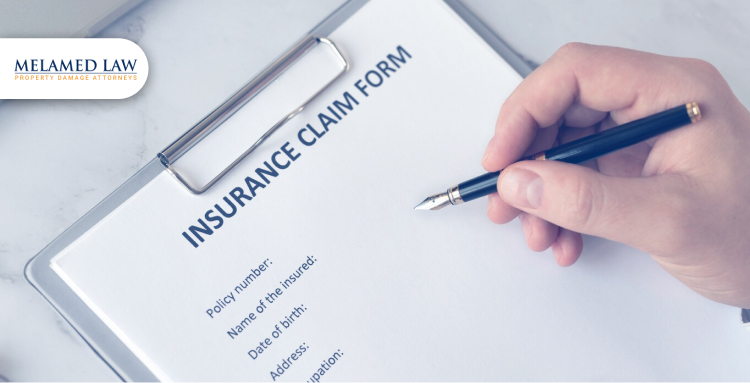
How to File a Property Damage Insurance Claim in Florida
Property damage can strike when you least expect it, leaving you feeling vulnerable and anxious. Whether resulting from a sudden accident, unexpected flooding, or structural issues, understanding how to file a property damage insurance claim is vital for protecting your interests. In Florida, the claims process can appear daunting, but grasping the necessary steps can significantly influence your ability to secure the compensation you rightfully deserve.
By filing your claim accurately, you can alleviate some of the stress and focus on what truly matters—restoring your property to its former condition. Let’s take a closer look at the essential steps to follow when filing a property damage insurance claim in Florida, ensuring you are well-prepared for any situation that may arise.
(1) Assessing Property Damage: Your First Step
When dealing with property damage, whether from hurricanes or structural failures, the first step is always to prioritize safety. Before entering the premises, take a moment to assess the situation—look for hazards such as unstable structures, downed power lines, or gas leaks. Your well-being is the most important thing to consider.
Once it’s safe to proceed, it’s time to document the damage thoroughly. Use your smartphone or camera to capture detailed photos and videos from various angles. This visual evidence is crucial for your insurance claim, as it helps illustrate the extent of the loss to your insurer.
If there are immediate risks of further damage—like a broken window or a leaking roof—take action to make temporary repairs. Use tarps or plywood to cover openings and prevent water intrusion, and don’t forget to keep all receipts for any materials purchased. These expenses can often be reimbursed as part of your claim, so it’s essential to maintain clear records.
(2) Review Your Insurance Policy Before Filing
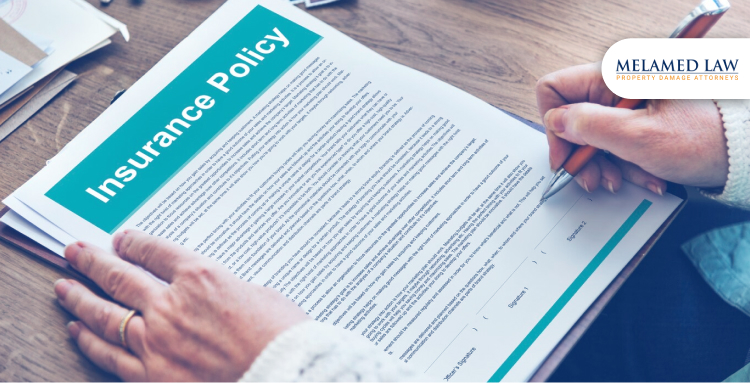
Once you’ve assessed the damage, the next step is to carefully review your insurance policy. Understanding your coverage limits is crucial—this is your first line of defense in securing the compensation you need. Take the time to identify exactly what types of damage are covered under your policy. Common coverage areas include water damage, fire damage, and structural issues, but each policy can vary significantly. Knowing what is included will help you gauge your options and prepare for the claims process.
Next, it’s essential to identify any deductibles you’ll need to meet. A deductible is the amount you must pay out-of-pocket before your insurance kicks in, and it can vary depending on the type of damage and your specific policy. Being aware of your deductibles upfront will help you plan for the financial implications of your claim.
Lastly, check for any time limits associated with reporting claims. Many insurance policies have strict deadlines for filing a claim after an incident occurs. Missing these deadlines can jeopardize your ability to receive compensation, so it’s vital to be proactive.
(3) How to Report Your Claim Quickly
Once you’ve assessed the damage and reviewed your insurance policy, it’s time to report your claim promptly. Acting quickly can make a significant difference in the outcome of your case. Here’s how to get started:
Contact your insurer: First, contact your insurer. Most insurance companies provide various methods to file a claim—whether through their app, website, or customer service hotline. Many insurers now offer user-friendly digital platforms that allow you to submit your claim swiftly and easily, eliminating the need to wait on hold or contend with complicated paperwork.
Provide accurate information: When you’re filing your claim, it’s important to provide clear, accurate information about the incident and the damage. Make sure you include key details, such as:
The date and time the incident happened
What kind of damage you’re dealing with—whether it’s water, fire, or structural
Any circumstances that contributed to the damage or might be important for the insurer to know
Get a claim number: After submitting your claim, be sure to receive and save your claim number. This unique identifier will be essential for tracking the status of your claim and referencing your case in future communications with your insurer.
(4) Legal Requirements for Reporting Claims in Florida
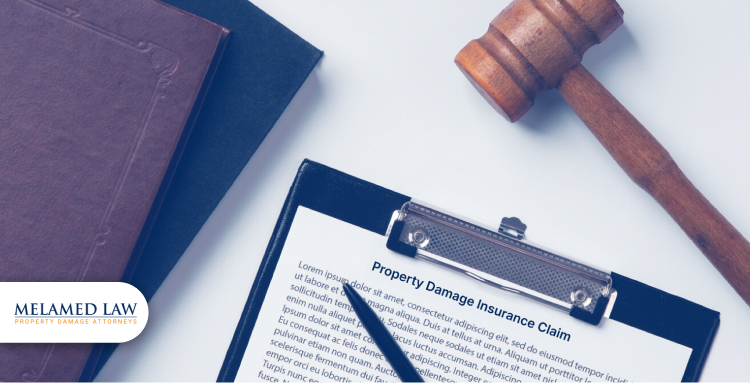
When you’re reporting your property damage insurance claim in Florida, it’s crucial to adhere to the guidelines established by state law to ensure everything runs smoothly. According to Florida Statutes Section 627.70131, insurers are required to acknowledge receipt of a claim within 14 days, unless payment is made within that time frame. Moreover, once the insurer receives your complete proof of loss statement, they must promptly initiate an investigation unless unforeseen circumstances prevent them from doing so.
Additionally, the Homeowner Claims Bill of Rights stipulates that insurers must confirm the status of your claim—whether it’s fully covered, partially covered, denied, or still under investigation—within 30 days after receiving your complete proof of loss, provided you request this confirmation in writing. Florida law also mandates that insurers either pay or deny your claim within 90 days of receiving your notice, unless external factors cause a delay. If payments are delayed beyond this timeframe without a valid reason, the insurer must pay interest on the amount owed from the date you filed your claim.
(5) What to Expect During the Adjuster's Inspection
Once you’ve reported your claim, the next step is to schedule an inspection with your insurance adjuster. This is a critical phase in the claims process, as the adjuster will assess the damage and determine the compensation you’re entitled to. Here’s how to prepare:
Prepare for the visit:
Before the adjuster arrives, gather all relevant documentation to support your claim. This includes:
Photos and videos showing the damage from different angles—more evidence is always better.
Receipts for any temporary repairs you made, like patching a leak or boarding up windows.
A list of damaged items with their estimated value, so you have everything accounted for.
Point out all damage:
During the inspection, walk through the property with the adjuster and ensure that every issue is highlighted. Don’t hesitate to point out any details you feel are significant, including hidden damage that might not be immediately visible. Your thoroughness will help the adjuster get a complete understanding of the situation.
Consider a public adjuster:
If the damage is extensive, or if you’re worried the insurer’s adjuster might not give you a fair evaluation, you might want to bring in a public adjuster. These professionals work for you, not the insurance company. They know how to interpret policy language, spot overlooked damage, and fight for an accurate payout. Having a public adjuster on your side can make a big difference, especially if the insurance company’s initial offer doesn’t reflect the true cost of repairs.
(6) Keeping Track of Your Claim and Expenses

Maintaining accurate records throughout the claims process is essential for ensuring a smooth experience and securing the compensation. Here are key steps to follow:
Track communication:
Keep a detailed log of all interactions with your insurer. This should include dates, names of representatives you spoke with, and notes about what was discussed. Having this information on hand can be invaluable if you need to reference past conversations or escalate your claim.
Document expenses:
As you navigate the claims process, be diligent about documenting any expenses related to the damage. This includes keeping receipts for temporary repairs, such as tarps or boarding up windows, as well as any additional costs you incur, like accommodation if your home is uninhabitable. These records will support your claim for reimbursement.
Follow up regularly:
Don’t wait passively for updates on your claim. Stay proactive by regularly checking in with your insurer to inquire about the status of your claim. If you notice any delays or lack of communication, don’t hesitate to ask for clarification or escalate the issue to ensure your claim is processed in a timely manner.
(7) How to Review and Negotiate Your Settlement Offer
After your claim has been assessed, your insurer will present a settlement offer. It's crucial to take a close look at this offer to ensure it meets your needs.
Evaluate the offer:
Begin by carefully reviewing the details of the settlement. Make sure the amount offered adequately covers all damages, including repair costs, temporary housing, and any other related expenses. Compare the offer against your documentation and estimates from contractors to determine if it aligns with the true cost of the damages.
Negotiate if necessary:
If the initial offer seems insufficient, don’t hesitate to negotiate. Insurers often expect some back-and-forth, and presenting solid evidence—like repair estimates or independent appraisals—can strengthen your position. Be assertive in communicating your needs and don’t accept the first offer if it doesn’t reflect the true extent of your damages.
(8) Closing Your Claim and Making Repairs

Once you’ve reached an agreement with your insurer, it’s time to focus on receiving your payment and making the necessary repairs to your property.
Understand payment terms:
Familiarize yourself with the payment process detailed in your settlement. Payments may be issued in installments or as a lump sum, depending on the insurer’s policies and the specifics of your claim. Understanding how and when you will receive funds can assist you in managing your budget and planning for necessary repairs.
Hire licensed contractors:
When it’s time to make permanent repairs, ensure you hire licensed and reputable contractors. Research potential contractors by checking reviews, verifying licenses, and asking for estimates. Using qualified professionals not only ensures the repairs are done correctly but also prevents future issues that could arise from subpar workmanship.
Finalize the claim:
After all repairs are completed, notify your insurer to officially close the claim. This step is important for ensuring that all obligations are fulfilled and that you have a documented record of the repairs made. Keeping clear communication with your insurer during this phase will solidify your successful claims experience.
How Melamed Law Can Help You with Your Claim
At Melamed Law, we understand just how frustrating and stressful the property damage claims process can be. Whether it’s dealing with delayed responses, denied claims, or low settlement offers, we know these challenges can leave you feeling numb. That’s why our team is here—to guide you through every step and make sure you get the outcome.
If your claim is denied or the insurer’s offer doesn’t reflect the true value of your damages, we’ll step in and fight on your behalf. We’re experienced in filing appeals, negotiating settlements, and making sure that every aspect of your damage is fairly assessed. Your concerns won’t get overlooked—we’ll ensure that your voice is heard and your claim is taken seriously.
Insurance companies can be tough, but we know the system inside and out—and we won’t let them take advantage of you. Contact Melamed Law today and let us assist you in restoring your property to its rightful condition.
Let Melamed Law Lead the Way—
Contact Us for Trusted Guidance!
